
How AI is impacting water Senator on PFAS inquiry Pumped for the next steps


“Proactive trenchless renewals are one of the keys to defending our critical water and wastewater services in a sustainable and costeffective way”

– Will Zillmann, Interflow










How AI is impacting water Senator on PFAS inquiry Pumped for the next steps


“Proactive trenchless renewals are one of the keys to defending our critical water and wastewater services in a sustainable and costeffective way”

– Will Zillmann, Interflow








I AM SURE many of our readers have spent considerable time standing (or sitting) at an exhibition booth. In my case, I’m doing exactly that as I write this letter to the readers of Inside Water. Surrounding me are well-established companies showcasing their latest pumps, water testing and dosing solutions, while others are nervously preparing for their presentations in front of an interested and engaged audience.
The hubbub that surrounds me reminds me of the challenges of showcasing solutions to some of our biggest clients: governments.
With the Federal Election called (and presumably decided at the time of publication), more people will pay attention to environmental and sustainability causes.
At the same time, others are concerned about the cost of everything, whether it is water rates, climate change action, or government funds invested in major projects. With these discussions dominating the headlines, it’s important to look at how different projects can reshape the landscape of the water industry.
One such major investment that governments are increasingly considering is the construction of desalination plants. SUEZ has considerable experience in this space, and understands how the unpredictability of climate change has driven the need to develop reliable and climate-independent sources of water.
On a similar note, South Australian Deputy Premier and Minister for Water Susan Close provided her insights on the challenges facing the driest state of Australia. Like Western Australia, desalination has been a key part of the solution for South Australia, and Close’s insights have been vital to understanding what is going on.
With OzWater, Australia’s premier water event, landing in Adelaide in just a few weeks, SA Water was similarly keen to showcase how desalination is a key feature of its water future. It’s been working to ensure that residents across the state have secure access to water at all times.
When we think about water, the majority of us have heard the discussion surrounding PFAS (per and polyfluoroalkyl substances), in our drinking water. Senator Lidia Thorpe is running a Senate Select Committee on PFAS. She took the time to speak to us about how this ‘forever chemical’ is impacting First Nations communities, particularly around Wreck Bay, and what she hopes to achieve through the committee.
This edition also discusses issues such as digital metering, water and wastewater management, artificial intelligence, sustainability and education. These are all key issues affecting the water industry, and unique perspectives are being provided from across Australia and around the world.
We look forward to seeing you in Adelaide at OzWater and hope to receive your contributions soon.
Keep reading.
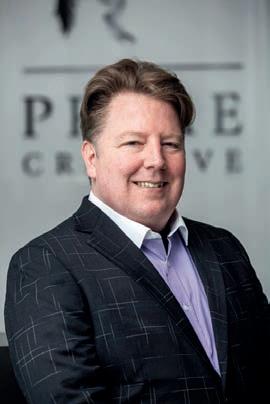
Chief Executive Officer John Murphy john.murphy@primecreative.com.au
Chief Operating Officer Christine Clancy christine.clancy@primecreative.com.au
Publisher Sarah Baker sarah.baker@primecreative.com.au
Managing Editor Lisa Korycki lisa.korycki@primecreative.com.au
Editor Chris Edwards chris.edwards@primecreative.com.au
Design Alejandro Molano/Michelle Weston
Head of Design Blake Storey blake.storey@primecreative.com.au
Brand Manager Adele Haywood adele.haywood@primecreative.com.au p: +61 403 500 544
Client Success Manager Louisa Stocks louisa.stocks@primecreative.com.au
Head Office
Prime Creative Pty Ltd 379 Docklands Drive, Docklands, Victoria 3008 p: +61 3 9690 8766 enquiries@primecreative.com.au www.insidewater.com.au
Subscriptions
+61 3 9690 8766 subscriptions@primecreative.com.au
Inside Water is available by subscription from the publisher. The rights of refusal are reserved by the publisher.
Cover image
SUEZ Australia and New Zealand
Articles
All articles submitted for publication become the property of the publisher. The Editor reserves the right to adjust any article to conform with the magazine format.
Copyright Inside Water is owned by Prime Creative Media and published by John Murphy. All material in Inside Water is copyright and no part may be reproduced or copied in any form or by any means (graphic, electronic or mechanical including information and retrieval systems) without written permission of the publisher. The Editor welcomes contributions but reserves the right to accept or reject any material. While every effort has been made to ensure the accuracy of information, Prime Creative Media will not accept responsibility for errors or omissions or for any consequences arising from reliance on information published. The opinions expressed in Inside Water are not necessarily the opinions of, or endorsed by the publisher unless otherwise stated.

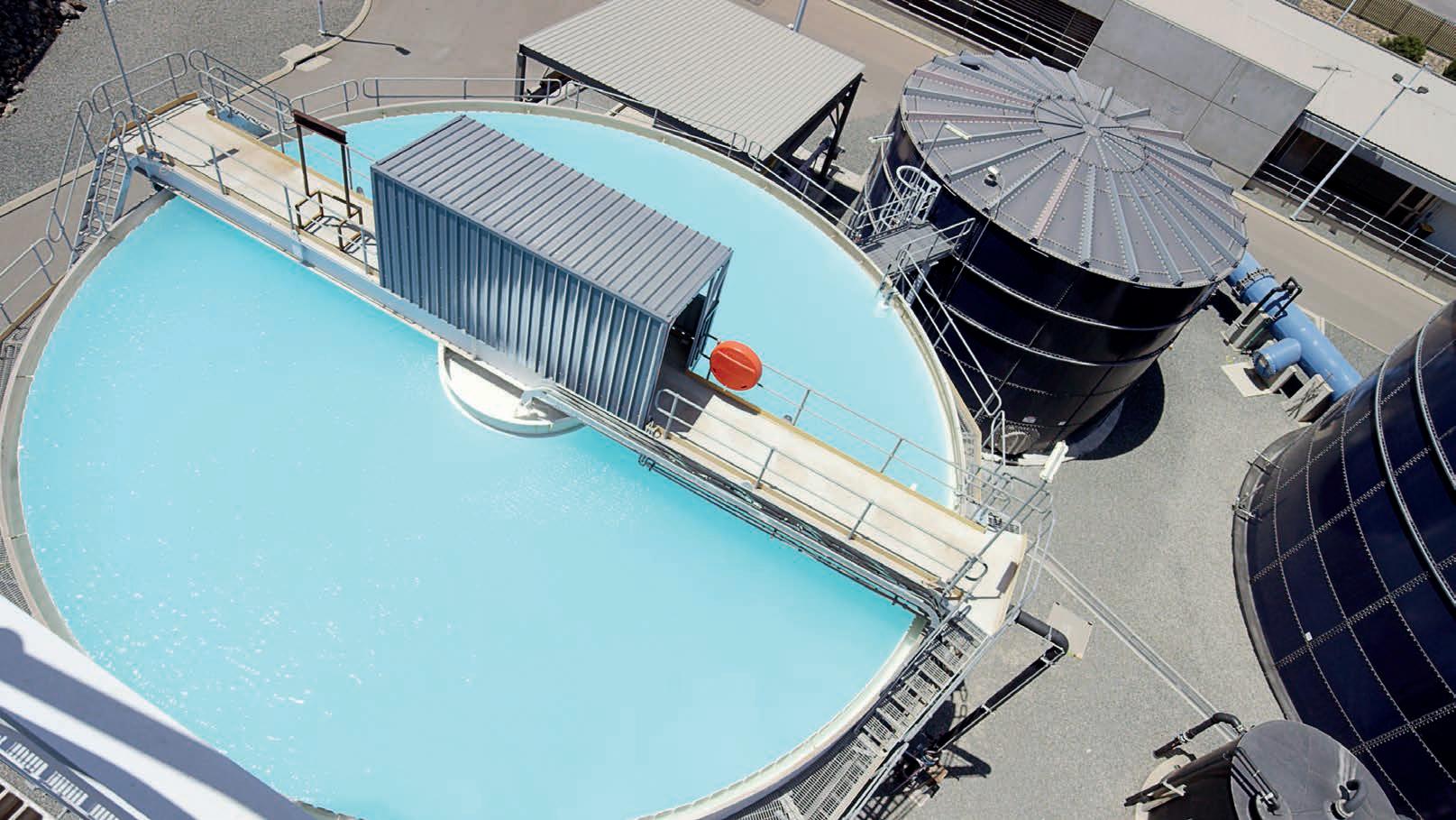
When the Millennium Drought gripped Australia, it exposed the country’s deepest vulnerability: A dangerous reliance on rainfall. Years later, widespread floods delivered the opposite shock – too much water, too quickly, with nowhere to go.
WATER HAS ALWAYS been a defining force in Australia’s story, shaping its communities, industries, and landscapes. But in recent decades, it has become a defining challenge. The Millennium Drought saw dam levels plummet, with storages in some cities dropping below 20 per cent. The crisis forced governments to accelerate action on alternative supply strategies, leading to a wave of investment in desalination, water recycling, and water efficiency measures.
But the weather didn’t settle. In the years since, climate volatility has only intensified. From the catastrophic Black Summer bushfires to backto-back flooding across the eastern seaboard, Australia faces both the risk of extended dry periods and destructive rainfall events in rapid succession.
These extremes have one thing in common: they both reveal the fragility of our water systems. In a climate defined by unpredictability, water
security demands more than tradition. It demands innovation, urgency, and scale.
This dual threat of drought and deluge is redefining how we think about water. The challenge is no longer just scarcity. It’s unpredictability. In that context, desalination has emerged not as a backup but as a foundation for a secure, climate-resilient water supply.

For nearly two decades, SUEZ has supported local communities across Australia through the delivery and operation of reliable, climateindependent desalination solutions.
Images: SUEZ
Julien Tauvry is a desalination expert and plant director for SUEZ.
exploring their next phase of supply augmentation. Each state approaches this differently based on topography, population growth, water storage history, and surface water reliability, but one tool consistently appears in the mix in water supply planning and investigations: desalination. Desalination has long been part of Australia’s response to water scarcity. What’s changed is its scale, sophistication, and strategic importance. Once used to support isolated communities and mining towns, desalination has evolved into a core pillar of urban water planning. From early solar ponds in the outback to today’s large-scale, renewable-powered facilities, desalination has matured in step with Australia’s climate realities. It has moved from the margins to the mainstream as an integrated, scalable, and climate-independent source of supply. Desalination now sits alongside water recycling, stormwater harvesting, and demand management as part of a diversified approach to long-term water security.
Julien Tauvry, a desalination expert with more than two decades of experience in Europe, the Middle
East, Asia, and Australia, is the Plant Director for one of the Southern Hemisphere’s most advanced desalination facilities. He has worked in R&D, engineering design and construction (E&C), operations, and stakeholder engagement and believes that the sector is now entering a critical new chapter.
“Desalination has never been an afterthought and no longer should desalination be considered an option of last resort,” Tauvry said. “Its role is only growing. What matters now is how we use it. It is smarter, faster, and with a lighter footprint. That is the challenge and opportunity before us.”
Planning for the next water wave
Desalination is being considered in many jurisdictions across Australia, whether in pre-feasibility discussions, long-term master planning, or formal environmental assessments. This is not a gradual re-entry. It is part of what many are calling a second water infrastructure wave.
It has been more than a decade since Australia’s last major desalination investment. The earliest plants are already being evaluated for upgrade or expansion. Others are being scoped as greenfield proposals to meet emerging population demand and prepare for supply shocks.
According to SUEZ, the potential for desalination to augment system capacity across Australia in the next 10 years exceeds 1000 billion litres – more than twice the volume of Sydney Harbour. This includes combinations of plant expansions, modular rollouts in growth corridors, and new-build facilities in highrisk regions.
“These are real numbers, not theoretical models,” said Lisa Chan, Major Projects Lead for SUEZ Australia and New Zealand. “We’re seeing projects at various planning stages, from community consultation,
technology trials and business case approval.”
Chan added that states such as Western Australia, Victoria, and South Australia are actively reviewing new site options or expanding their existing footprint capacity. “Most major cities in Australia are factoring desalination into their long-term strategies as a climate resilient water source.”
Redefining desalination: efficient, scalable, essential
Once seen as a high-cost, highenergy solution reserved for drought emergencies, desalination today is a very different proposition.
Technological advances in reverse osmosis, energy recovery, circularity and smart automation have redefined what modern plants can achieve.
“Desalination is no longer a fringe technology,” said Tauvry. “It is central to how we plan secure water futures. It is no longer just for crises but as part of normal operations.
“Infrastructure decisions can’t be
The management of water at
Modern plants now routinely incorporate energy recovery systems that capture and reuse pressure energy within the reverse osmosis process, reducing energy consumption by up to 45 per cent compared to first-generation facilities. Many operate on 100 per cent renewable energy, and most are designed for flexible operation: scaling up in drought years and preserving during periods of lower demand.
“We’ve moved beyond the idea that desalination is a luxury,” said Tauvry. “It’s a necessity. And when designed well, it’s efficient and reliable.”
Innovation is the edge
While scale and reliability are desalination’s core strengths, innovation will define its future role.
Chan leads SUEZ’s Major Projects Portfolios, with a strategic focus on integrating innovation and technology solutions for building next-generation desalination plant solutions.
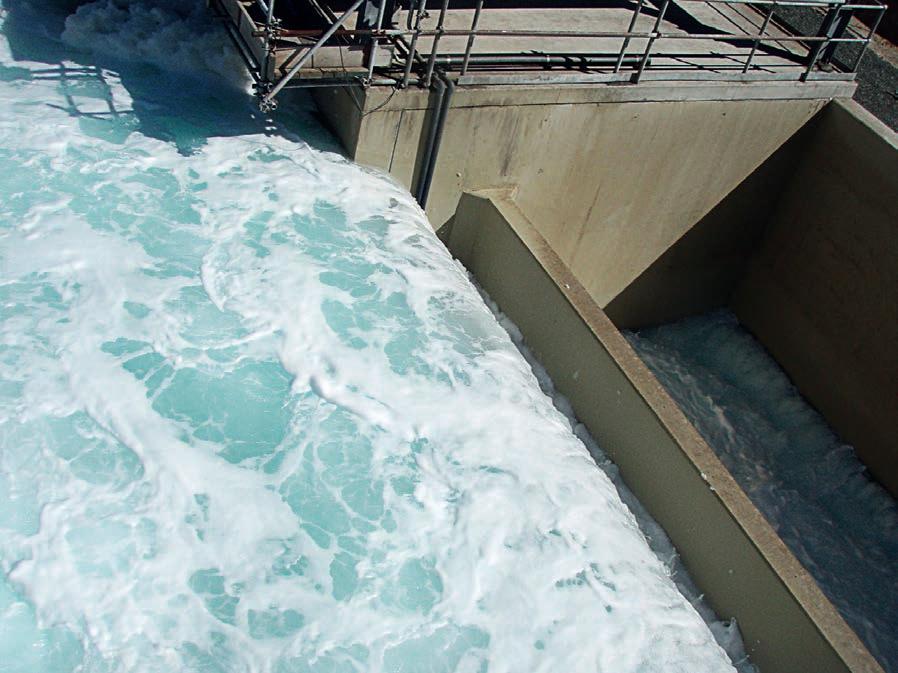
come together to create a cleaner, more circular water cycle.”
She points to predictive analytics platforms that help operators anticipate membrane fouling before it happens. The technology allows for proactive cleaning schedules, reduced downtime, and extended asset life. Sensors and digital twins are being used to simulate environmental impacts, plant performance and adjust operational strategies in real time.
“Innovation in this space is all about optimisation,” she said. “We want every drop of energy and water to be used as efficiently as possible.”
One particularly promising development is brine valorisation, a process by which the minerals in the waste stream are recovered and reused. SUEZ is trialling systems that recover magnesium, calcium, and even lithium from brine. Recovered minerals are used for remineralisation of the desalination permeate water, making the plant chemically selfsufficient by eliminating the need for traditional remineralisation systems and on-site chemical storage. In addition, the recovered by-products could create value streams for desalination plants and reduce their environmental footprint.
“That’s the future we’re working toward,” said Chan. “Desalination that doesn’t just supply water, but supplies resources, knowledge, resilience and sustainability.”
Climate-resilient by design
Modern desalination is no longer the high-impact, energy-intensive solution of the past. In Australia and New Zealand, it has become a mainstay of climate-resilient water supply.
In Perth, desalination already supplies around 35 per cent of the city’s drinking water. In Auckland, the Warkworth and Snells Beach Desalination Plant was brought online in 2021 to support regional
supply during the city’s worst drought in decades. These are not backup options but core components of future-ready infrastructure. Energy efficiency has also improved dramatically. Australia’s average seawater reverse osmosis plants now operate around 3.0 kilowatt-hours per kilolitre (kWh/kL), compared to more than 4.5 in the early 2000s. Thanks to energy recovery devices and highefficiency pumps, new facilities are trialling sub-2.5 kWh/kL performance. Beyond power, sustainability has taken on a broader meaning. SUEZ is trialling brine valorisation to extract minerals from the concentrate stream, advancing modular design for flexible rollout and construction efficiency, and deploying real-time environmental monitoring to reduce marine impact.
“We continue to research and enhance the value that we deliver through desalination,” said Chan. “Our innovation roadmap focuses on desalination as part of a circular, regenerative water cycle.”
Embedded in communities Infrastructure doesn’t succeed on engineering alone. Community trust and participation are essential. Tauvry knows that the key is to be an active part of the community on a longterm basis.
“At SUEZ, we don’t just build and walk away,” he said. “We embed. We live locally. We train local staff. We open our doors to schools. We publish our data.”
His teams routinely host open days and site tours, collaborate with universities, and run STEM programs to create pathways into water sector careers. Internships, apprenticeships, and partnerships with Traditional Owners and local businesses are now standard practice.
“When people understand how desalination works, how efficient it is,
and how it’s integrated into a bigger water story, the perception shifts,” Tauvry said. “It becomes something they trust.”
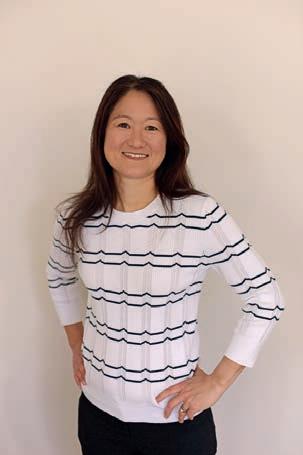
mysterious box on the coast’. It’s visible, open, and increasingly vital. With every new project, communities aren’t just receiving water; they’re becoming partners in resilience.
Learning locally, listening globally Australia’s desalination journey over the past two decades offers a valuable playbook for the future. Early investments, flexible design, community integration and sustainability features have set a strong precedent for the next wave.
At the same time, Australia is learning from global leaders. In Spain, desalination plants now support agriculture and urban supply. In Oman and the UAE, massive coastal plants operate around the clock to meet demand from megacities. In Singapore, desalination is fully integrated into a broader system, including stormwater, reservoirs, and indirect potable reuse.
“The international lessons are there,” Chan said. “But the solution must always fit the place.”
In Australia, future projects will likely combine smaller, modular rollouts with larger regional hubs. Many will be co-located with renewable energy generation or embedded in broader water precincts and integrated water supply schemes, including
wastewater reuse and recharge. “The next plants will look different to the last,” Chan said. “We will see even more sustainability integration and desalination as part of a complete system solution.”
The road ahead Desalination is not a silver bullet. No single supply source can meet the full spectrum of challenges facing Australia’s water future. However, desalination is uniquely placed to provide dependable, rainfallindependent supply at scale. That’s especially true when paired with
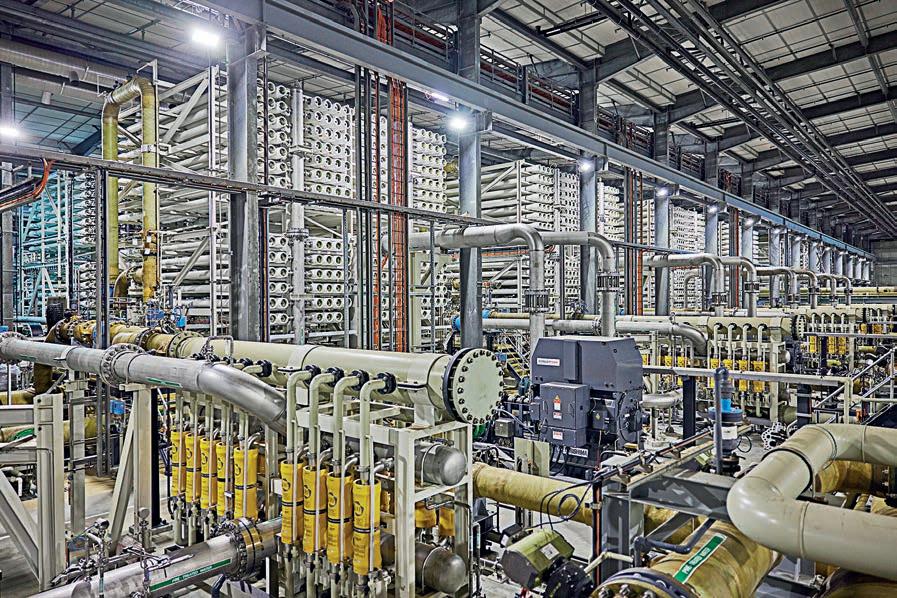
the right technology, environmental oversight, and operational expertise. Integrated planning will be key. The cities of the future will need hybrid solutions that blend desalination with water recycling, aquifer recharge, stormwater harvesting, conservation, and smart metering. Each element must complement the others, supporting a system that is as diverse as it is dependable.
At SUEZ, systems-level thinking is already guiding strategy. “We are preparing for the second water
The thousands of reverse osmosis membranes are critical in providing clean drinking water to local residents.
infrastructure wave,” said Tauvry.
“And we’re doing it with better tools, smarter systems, and deeper community partnerships.”
Chan is optimistic about the sector’s future.
“We’re building the next generation of desalination,” she said. “It’s more sustainable, intelligent, and integrated than anything that came before. That’s what it will take to build a truly futurefocused, sustainable water supply.”
For more information, visit suez.com

A locally developed network leak detection solution is driving significant non-revenue water savings at scale, strengthening digital metering business cases, and quickly gaining attention from utilities across the globe.
A 2018 STUDY by the International Water Association (IWA) found that leaks and inefficiencies result in the loss of approximately 126 billion cubic metres (about US$39 billion) of water each year.
Historically, leaks have been investigated when visible at the surface or where unexplained increases in nighttime water flows have become evident over time. Deploying District Metering Areas (DMA) and using listening sticks are common practices to detect and locate network leak issues, but they are expensive to deploy and maintain and don’t provide near-real-time data about a network.
As utilities transition to digital metering, the past decade has largely been focused on developing solutions for customer-side leaks. But what if this could be combined with collecting near-real-time data from the network to identify and locate network-side leaks?
Enter Sotto, a network leak detection solution developed by South East Water that uses cost-effective, vibration sensor-based technology integrated within digital meters. The sensors capture vibration samples each night, and this data is used to determine a vibration intensity score. This score indicates whether a network side leak may be present. The score and other data are sent as part of the daily meter payload to an IoT platform for additional analysis and to raise alerts.
The data is processed using an algorithm that filters out false positives caused by rainfall, irrigation, or nearby construction activity.
The technology is delivering impressive results. By early April almost 46,500 units of a planned total of 660,000 sensors had been deployed across the South East Water network, which has saved 360 ML of non-revenue water. At full deployment South East Water estimates Sotto will save at least 1.6GL per year of non-revenue bulk water.
A scalable approach gaining global appeal
At the heart of the initiative is Marie Newington, Principal Data Scientist at South East Water, who says unlike traditional acoustic leak detection, which has been costly and limited in coverage, Sotto’s affordability has enabled South East Water to implement a widespread, data-driven approach to network leak monitoring.
“Sotto is a game changer giving us the ability to do proactive, remote network leak detection, which we haven’t ever had at this scale before,” Newington said. “Acoustic detection isn’t new, but what makes Sotto revolutionary is that it’s cost-effective enough to be installed in every residential meter as part of a digital meter installation.”
Data from these sensors is collected daily, offering a near real-time snapshot of potential leaks developing across the network. Operators use an advanced decision-support tool to visualise leak locations, which can generate heat maps that pinpoint trouble spots with remarkable accuracy.
With Iota leading the commercialisation of Sotto, its impact is extending well beyond Victoria’s
Marie Newington is the Principal Data Scientist at South East Water, and understands the benefit of Sotto to the utility. Image: South East Water
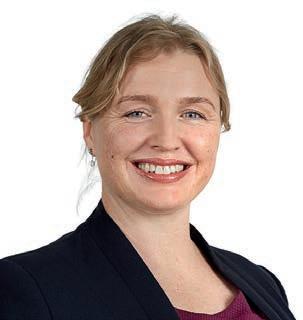
water pipes. Sotto is already making its international debut with devices bound for Sweden. There is also registered interest from Europe, the Middle East and Asia-Pacific.
The broader water industry, both in Australia and globally, faces the same challenges of ageing infrastructure, non-revenue water loss, and climate-driven resource and budget constraints. A scalable, cost-effective leak detection solution is in demand.
“What’s remarkable is that a technology developed here has the potential to redefine how we tackle water loss worldwide,” Newington said.
“Every year, billions of litres of water disappear without a trace. We have to be more innovative in preserving this finite resource.”
Digitally driven, human enhanced
One of the key breakthroughs of the technology was refining how leaks were prioritised. Initially, operators would investigate every flagged leak in an area, often finding false positives.
The team dramatically improved efficiency and credibility by incorporating human oversight during the technology’s development, allowing experienced operators to validate leak signals against known characteristics.
“The expertise of our operators and leak detection subject matter experts has been invaluable in developing and getting the system right,” Newington said.
Proving the business case and more The success of Sotto has not only


improved leak detection but also strengthened the case for digital metering programs. The technology’s impact on reducing non-revenue water was a factor in a business case that secured funding for South East Water’s digital metering rollout.
“The benefits we predicted through proactive remote network leak detection are estimated to be at least 1.6GL of water savings per year,” Newington said.
This, plus a positive net present value of more than $50M over 30 years were
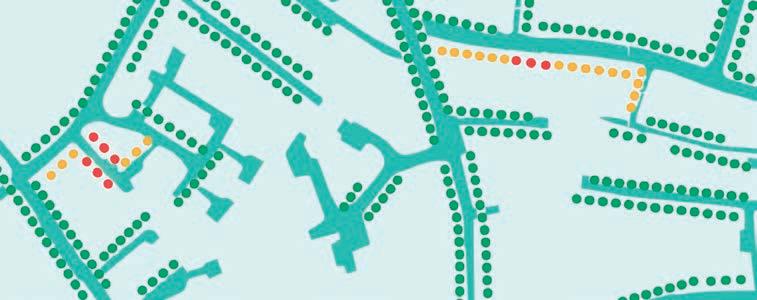
key to the success of the business case put forward to the regulator.
“Sotto’s ability to detect leaks and save water is beyond what we expected,” Newington said.
With increasing confidence in Sotto’s effectiveness, Iota is exploring ways to enhance and expand its use.
“As we continue to refine and scale Sotto, we’re seeing opportunities to optimise its effectiveness and expand its application,” Newington said. “The insights gained from our network have helped us reduce inefficiencies, and we believe this technology has the potential to support water
Left: The Sotto vibration sensor is integrated into digital meters.
Right: Finding leaks is easier with the Sotto-enabled heatmap.
Images: Iota, South East Water
utilities worldwide in tackling similar challenges.”
Despite the benefits, many smart metering programs do not include technology to detect network leaks. Sotto technology is proving to be the most effective (at scale) form of network leak detection for South East Water. “The challenge is ensuring that technology supports operations in a meaningful way, and we’re seeing Sotto achieve this like no other at a network level.”
For more information, visit iotaservices.com.au

The baseball stadium analogy of “build it, and they will come” does not apply to digital water meters. Taggle Systems shows us what work is needed for such a project to be effective and successful.
INSTALLING A FLEET of digital water meters won’t reduce water waste if the community isn’t engaged and the consumption data is used to lower their usage. Residents need to be actively shown how to access their data and the benefits of using the system. Many of Taggle’s council and water utility customers have successfully reduced water waste by engaging their communities.
Engaging key teams
Before diving into strategies, involving the Communications Team is essential, as it plays a crucial role in delivering these messages. Too often, digital metering projects remain within the water team, meaning the message never gets out, or it launches but quickly fades from the agenda. The Communications Team must be actively invested in the project, signed up for the customer portal, and in regular contact with the water team to maintain interest. Schedule monthly meetings between the Communications and water teams to discuss messaging opportunities and create a plan.
The Customer Service Team must also be included as the first point of contact for water billing inquiries. It can encourage customers to sign up for the Customer Portal and collect success stories when issues are resolved. Ensure they are well-trained in using the system and answering questions about customers’ water use.
Every council and water utility is different, as are its customers. When developing a strategy, remember that

messaging for a high-tourism area will differ from that for a regional agricultural centre or metropolitan city. Communities’ understanding of water’s importance, the challenges of delivering it, and the reasons for conservation can vary significantly. The way each water utility or local council reaches different communities also varies. Reflect on existing communication efforts and integrate water-saving messages into them. For example, a high-tourism area with many holiday homes might engage more through newsletters, whereas a regional centre may respond better to outreach at agricultural shows. Leverage local knowledge to tailor plans and brainstorm with the Communications Team to develop fresh ideas that suit the community.
Make the customer portal accessible
A customer portal is useless unless the community knows where to find it. A dedicated digital metering page on the council or water utility’s website – with information, FAQs, and a link to the portal– can direct
traffic. Including a quick link or banner on the homepage, water services page, and water savings page can also boost visibility.
Customers are most interested in their water consumption data when they receive a bill, especially a large one.
Include sign-up details on water bills and use billing periods as an opportunity to send messages via newsletters and social media, encouraging residents to sign up, detect leaks, and avoid bill shock.
Leverage social media
Social media can be a powerful engagement tool. Include the customer portal link in as many relevant posts as possible, such as water-saving tips, water restrictions, and other water education topics. Additionally, create a set of dedicated posts that drive interest and sign-ups, including messages about:
• How to sign up
• Finding and fixing leaks
• Monitoring garden water use
• Setting leak alerts
• The benefits of digital metering
• FAQs and interesting local water facts (e.g., total town water use, dam levels)
Visuals help keep these posts engaging. Use a variety of different images such as watering the garden, washing the car, loading a full dishwasher, flushing a half-flush toilet, screenshots of the portal and mobile app, and infographics about digital metering benefits.
Success stories help build confidence and encourage sign-ups. Highlight major leaks that were detected and fixed, whether at residential, commercial, or council properties.
Schools often experience high water losses, so working with a school to locate leaks and minimise losses can make for a compelling story. Community-wide reductions in water use following communication efforts also make great examples. Consider sharing these stories with the media for video coverage. Interviews with homeowners, business owners (if they agree), or council staff about how improved water management has saved water in parks and gardens can generate valuable publicity.
Engaging one-on-one with the community helps build trust and confidence. Attending local market days, agricultural shows, community events, or even setting up shopping centre stands can enhance community engagement. If the council or utility already has a presence at these events, train the attending staff, create pull-up banners, and distribute flyers to spread the water-saving message. If facilities allow, help people sign up for the portal on the spot.
Council facilities such as customer service centres, libraries, and sporting venues can also display pull-up banners, posters, and flyers to further promote engagement.
Children can be incredibly mighty messengers. School education programs are a great way to spread awareness. As part of water education efforts, teach students how to find a leak using the customer portal and encourage them to show their parents. This simple step can drive more sign-ups within the community.
Run a full-scale campaign
Consider launching a

comprehensive water-saving campaign across multiple media channels if budget and resources allow.
For example, when Mackay Regional Council launched its customer portal, it went all-in with a campaign called “Watch the Flow of Your H2O!”
The portal, named MyH2O, was tied directly to the messaging. The campaign led to a 12 per cent reduction in per capita residential water consumption.
While that may not sound like much, a reduction of about 30 litres per person per day adds up significantly. The council even deferred the need to build a new water treatment plant due to the savings. Having clear goals and desired outcomes can help drive enthusiasm and deliver real water savings.
Delivering the right message
These are all effective communication tools, but the messaging itself ultimately determines success. Explaining how data and consumption insights help consumers make informed decisions about water use can drive behaviour change, leading to both water and cost savings.
Education about identifying and fixing leaks–preventing potential property damage–can motivate individuals to act and sign up.
As communities focus more on sustainability and the environment, digital water meter data empowers
Customers can better manage their water use at home to reduce water waste and lower water bills
Image: alter_photo/ stock.adobe.com
individuals to connect with their water usage habits, make changes, and see the results.
The end result
Building consumer awareness is the key to unlocking the full potential of digital water meters. Without active engagement, the data remains underutilised, and water waste continues.
Councils and utilities can drive real behaviour change by involving the Communications and Customer Service teams, tailoring messaging to local communities, leveraging social media and traditional media, and sharing success stories.
A well-executed awareness strategy helps customers monitor their consumption and delivers tangible water savings that benefit the community and future infrastructure planning.
With the right approach, digital metering can be a powerful tool in creating a more waterconscious society.
For more information, visit taggle.com
Digital water meters help locate leaks and quantify high water use activities.
Image: Taggle
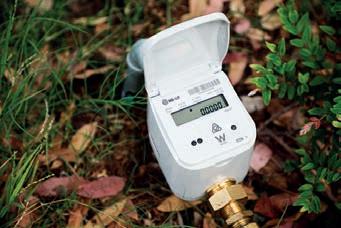
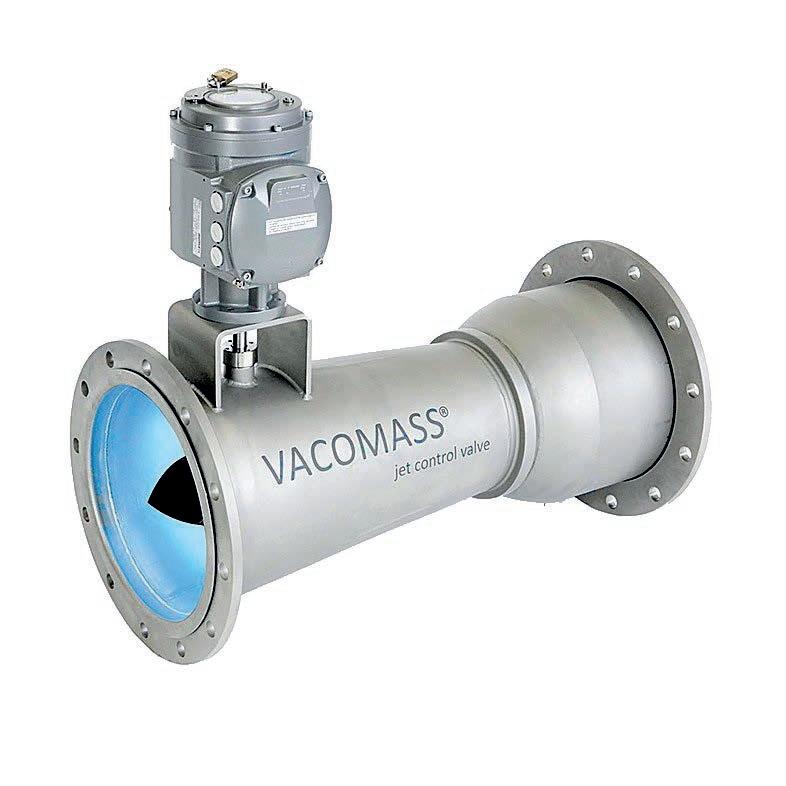

www.pumpandvalve.com
With years of experience in metering essential services, one company is now setting its sights on transforming the future of water management.
WATER, OFTEN TAKEN for granted, is now at the centre of a digital transformation. Researchers from the University of California Davis (UC Davis) in 2022 found water leaks waste a third of the world’s water supply. Similarly, a 2021 report from the Office of the Director of National Intelligence suggested that global water consumption would rise by 20 to 50 per cent above current levels by 2050.
With mounting pressure to improve efficiency, the question isn’t whether water authorities will embrace smart metering – it’s when. Enter Bluecurrent, a company well-versed in navigating the complexities of smart utilities and now making its foray into the water sector.

advantage
Experience meets opportunity Bluecurrent has spent 17 years refining its expertise in smart metering for electricity and, more recently, gas.
Richard Fink, Chief Product Officer, believes this background positions the company well to bring smart water metering to scale.
“We’ve been in the game for a long time,” he said. “We manage complexity across the electricity and gas sectors, and that experience translates directly into helping water authorities address sustainability and scarcity.”
The company’s expansion into water is not just a theoretical pivot. Its acquisition of Metropolis, a firm already working in smart water metering, has given Bluecurrent direct exposure to the industry.
Fink said this experience reinforces its belief the future of water management is digital.
Unlike some players who handle only parts of the process, Bluecurrent sees itself as an all-in-one provider. From procurement to installation, data management to maintenance, the company aims to simplify smart metering for water utilities.
“We take the complexity out of it,” Fink said. “There are a lot of players that do bits and pieces, but we do the end-to-end. We manage everything – hardware, installation, maintenance, connectivity, and data delivery. That’s the big difference.”
With utilities often struggling to integrate multiple service providers, Fink said Bluecurrent’s full-service model de-risks the process for water authorities. The challenge is not just installing meters but ensuring their long-term functionality.
“In water, the real challenge starts after installation,” he said. “Meters need to stay connected, send accurate data, and function efficiently over time. That’s where our expertise in maintaining large-scale deployments comes in.”
Working with the community is key to successfully rolling out smart meters.
Image: Bluecurrent
Lessons from energy
Bluecurrent’s entry into smart gas metering four years ago provided valuable lessons applicable to water. Much like water infrastructure, gas networks were ageing, with outdated meters and incomplete asset records. The transition to smart gas metering required close collaboration with retailers, field teams, and end customers – an approach Fink believes is just as crucial in the water sector.
“We learned a lot in gas, from dealing with old infrastructure to ensuring compliance, and the same principles apply to water,” he said. “We know rolling out smart meters at scale requires more than technology. It needs partnerships, field expertise, and robust management processes.”
future
As water authorities move from trials to full-scale deployments, the ability to manage complexity at scale will become increasingly important. Bluecurrent’s existing infrastructure and field expertise make it a strong contender for these rollouts.
“Our value proposition is simple: we’re a trusted, credible partner, and we can manage large-scale rollouts effectively,” Fink said. “Right now, water authorities are at a tipping point. The business cases are in place, and the time for action is now.”
With 2.6 million meters under management and billions of data intervals processed daily, Bluecurrent believes it has the operational muscle to support the water sector’s shift to smart metering.
For more information, visit bluecurrent.com.au
As technology continues to reshape the water sector, utilities must weigh the benefits of digitalisation against the risks of rapid, costly transitions.
“THE WATER INDUSTRY is changing, but that doesn’t mean throwing out everything that works. The key is to make practical improvements that align with real-world constraints, not just follow trends.”
John Comino has spent years working in the water industry and understands this challenge firsthand. His company, Strongcast, is taking a measured approach to metering infrastructure solutions, balancing innovation with practicality.
“We saw a real gap in the market where traditional solutions weren’t addressing the root causes of water loss,” Strongcast Managing Director Comino said. “We wanted to create products that actively help reduce leakage and improve system resilience.”
Water utilities must navigate a difficult path with ageing infrastructure on one side and mounting pressure to embrace digitalisation on the other. Is the industry prepared to leap from manual readings to fully integrated IoT systems? Or does a more gradual, step-by-step approach offer a more sustainable path forward?
Plugging the leaks
Non-revenue water (NRW) is a persistent problem for utilities. It’s not just about inaccurate readings; it’s about physical leaks in the system.
While many metering companies focus on better accuracy, some tackle the problem at the infrastructure level.
“When you talk to metering companies, they focus on apparent water loss with accurate metrology,” Comino said. “But no one was dealing with actual water loss in small
domestic settings.”
Rather than reinventing meters, Strongcast has developed complementary products designed to reduce leaks and improve overall system efficiency. Comino said that while technology plays a role, physical improvements to infrastructure are just as critical. The product line reflects the company’s commitment to practical water-metering infrastructure innovation.
Mechanical meters in a digital world
Smart meters dominate industry discussions, but the reality on the ground tells a different story. Many utilities still rely on mechanical meters, which remain a cost-effective and reliable option. This is precisely why Comino developed a completely new and separate entity known as Data Drop to support the challenges
around the term ‘smart meters’, but mechanical meters have their place. The key is finding the balance.”
For utilities, the challenge isn’t just about adopting new technology; it’s about ensuring that any investment aligns with operational needs and long-term planning.
Mechanical meters with minor digital enhancements can be the most pragmatic solution.
Why a gradual transition?
Many utilities are hesitant to make the major leap from manual readings to a fully digital system. A gradual transition allows utilities to upgrade their systems at a manageable pace, ensuring that each stage delivers tangible benefits before moving on.
“We like to take a stepped strategy that doesn’t commit a utility to one technology or the other,” Comino said. “Utilities get nervous about moving from manual meter reading straight to IoT metering. It’s a huge leap, and it happens very quickly.”
Looking ahead: Finding the right fit

Australia’s water utilities are diverse, and their metering solutions must reflect that reality. Some regional councils struggle with cellular coverage, making full IoT networks impractical. Others may not have the resources to process large volumes of real-time data. In these cases, alternative solutions such as drive-by technology offer a more practical way forward.
“We want to support utilities on this stepped journey,” Comino said. “There is no one-size-fits-all solution. We want to help customers reach their needs within their limits, year on year.”
For more information, visit strongcast.com.au and
Optimise operations to improve your bottom line


Bollfilter aquaBoll® automatic filter
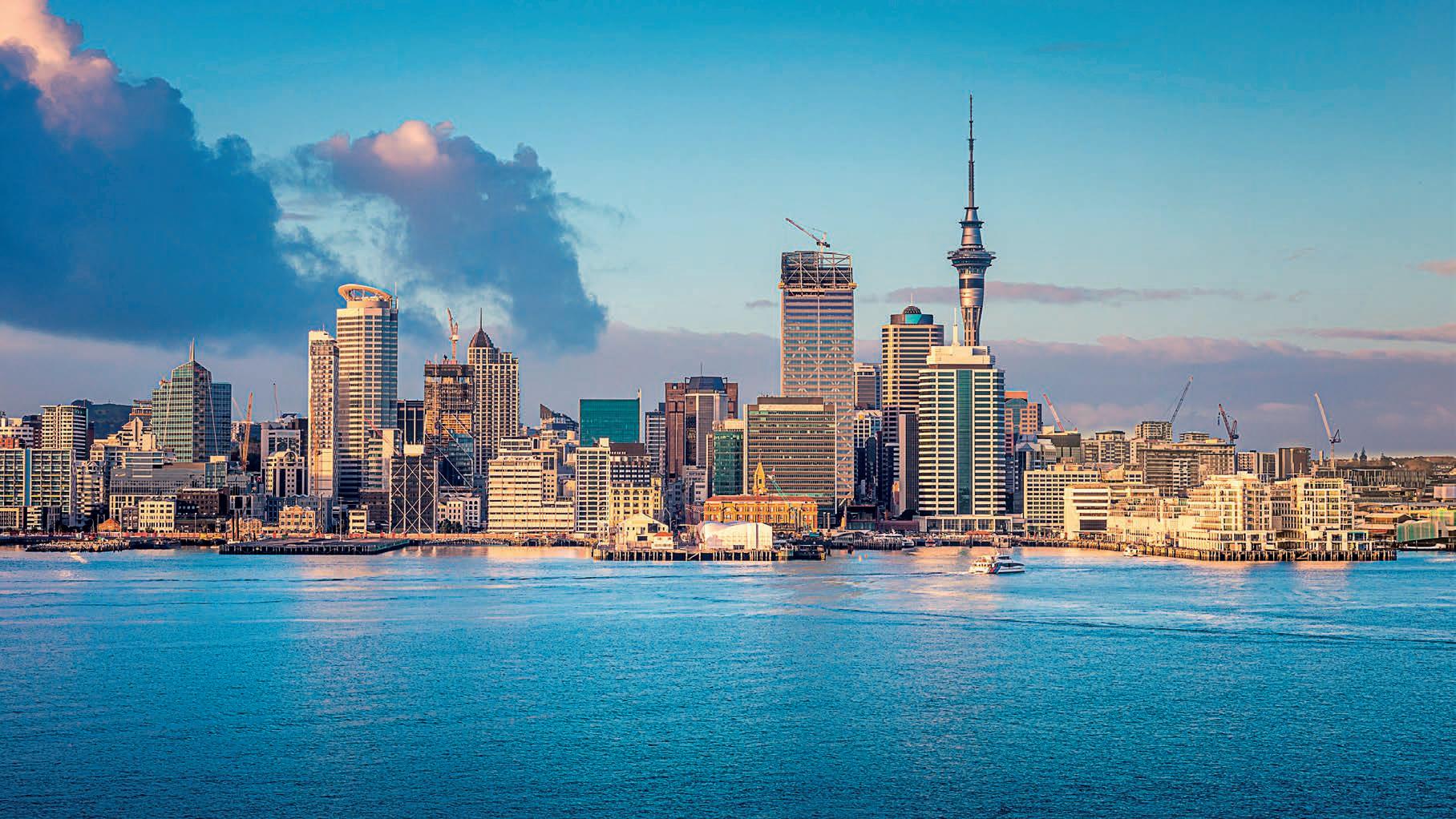
Auckland’s Central Interceptor is transforming wastewater management, one tunnel, one pump, and one innovation at a time.
AUCKLAND HAS FACED a persistent issue: When it rains, it pours, often leading to overflow.
The city’s outdated wastewater system struggles during heavy rainfall, resulting in raw sewage contaminating rivers and beaches. However, a bold and comprehensive solution is emerging: the Central Interceptor, which is currently in development.
Stretching 16.2 kilometres, this is Auckland’s largest wastewater project, aimed at capturing and relocating overflows from urban regions. In an industry where infrastructure needs to endure, the project demonstrates how innovation, engineering, and strategic investments can transform wastewater management.
A tunnel tackling overflows Auckland’s combined sewer system has struggled with stormwater inflows for years, often spilling sewage into the city’s harbours, which poses significant environmental and public health risks. Local waterways have been compromised, affecting marine life and recreational activities.
Watercare, the organisation overseeing the city’s water infrastructure, believes that the Central Interceptor, a major upgrade to the sewer system, will effectively reduce overflows by up to 80 per cent.
This project is seen as a crucial step in safeguarding Auckland’s water quality, improving the health of its aquatic ecosystems, and ensuring a cleaner, healthier environment for residents and visitors.
“This project will significantly reduce wastewater pollution, improving the quality of Auckland’s beaches and waterways,” a Watercare spokesperson said. “With a storage capacity of over 250,000 cubic metres – equivalent to 99 Olympicsized swimming pools – the tunnel will help manage peak wastewater flows and provide long-term relief for the city’s sewer network.”
The tunnel will run from Grey Lynn to the Māngere Wastewater Treatment Plant, intercepting and redirecting wastewater that would otherwise contribute to environmental contamination.
With Auckland’s population continuing to grow, the project is set to become a critical piece of infrastructure supporting sustainable urban expansion.
Engineering solutions for efficiency
While the tunnel is a massive feat, managing its wastewater requires robust pumping systems. That is where companies such as KSB play a role. For more than 150 years KSB has been at the forefront of wastewater pumping solutions, designing and supplying high-performance equipment for critical infrastructure.
“Effective wastewater management depends on reliable, clog-resistant pumps that can handle high volumes of mixed solids,” a KSB spokesperson said. “The right pump technology ensures wastewater moves efficiently through the system, reducing blockages and maintenance costs.”
At Pukekohe’s Pump Station 92, industrial wastewater containing
Auckland is the centre of a vast wastewater infrastructure upgrade. Image: Maurizio De Mattei/stock.adobe. com
long fibres had been causing frequent blockages. KSB said its open multi-vane impeller (D-max) retrofit resolved the issue, eliminating blockages and enhancing pump performance.
It believes that similar innovations in pump design can support large-scale wastewater projects.
The future of wastewater infrastructure
Major projects such as the Central Interceptor illustrate how significant investments can address persistent infrastructure challenges. Nevertheless, wastewater management solutions must keep evolving as urban populations grow and climate change heightens extreme weather events.
“Future-proofing wastewater networks means integrating smart monitoring, optimising pump performance, and investing in adaptive infrastructure,” the KSB spokesperson said. “As cities grow, the demand for efficient, sustainable wastewater solutions will only increase.”
With Auckland taking decisive steps to clean its waterways, other regions may consider similar deeptunnel solutions to modernise wastewater networks. Innovation in engineering and strategic investment will remain essential to ensuring urban environments are resilient, sustainable, and prepared for the challenges ahead.
For more information, visit ksb.com
KSB uses CFD (computational fluid dynamics) simulations to test the flow conditions in different designs during the planning phase. Image: KSB
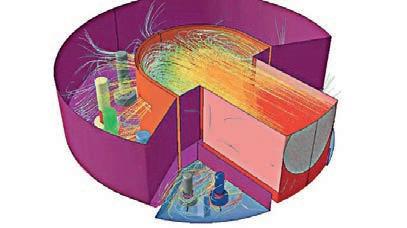
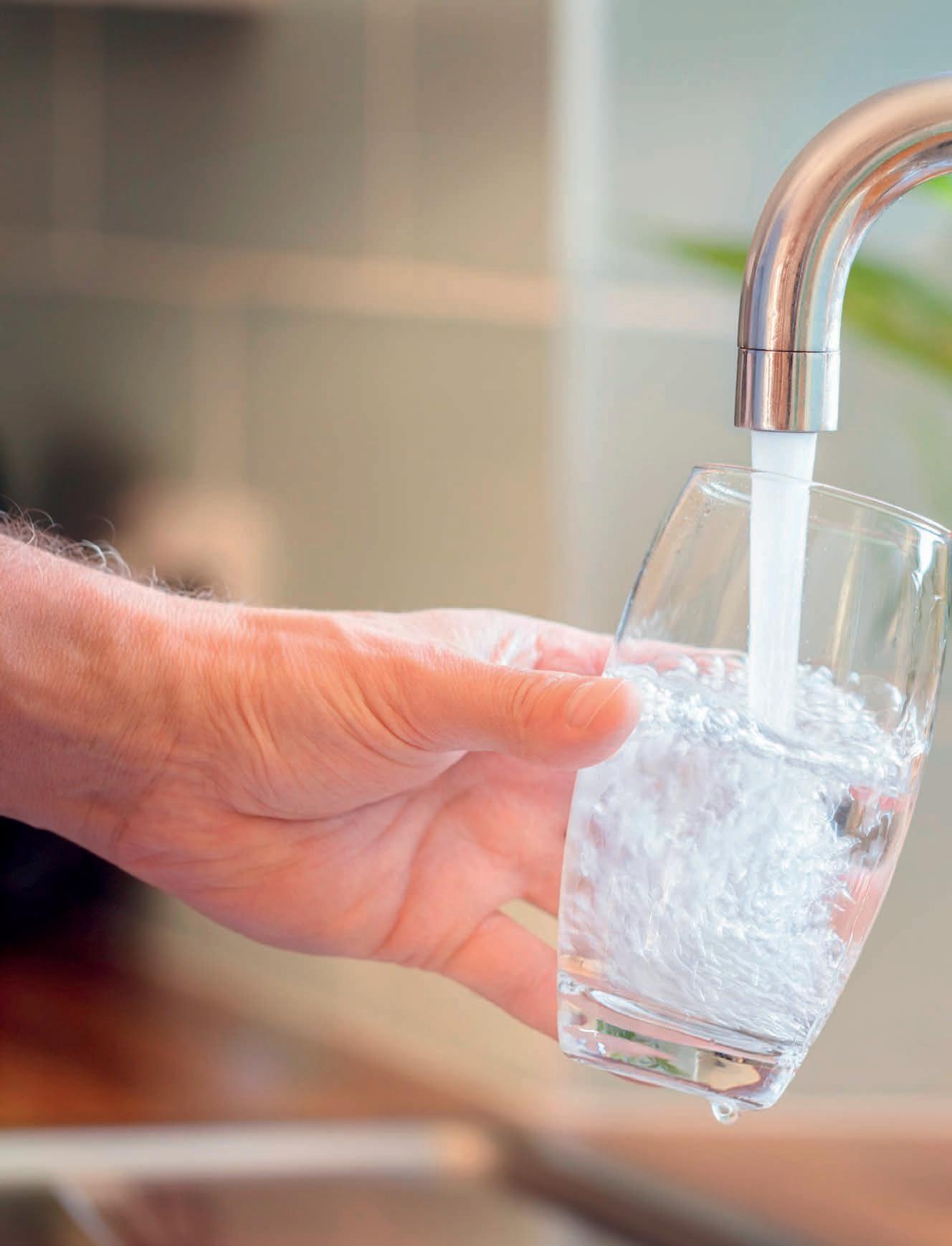
Bluecurrent’s Metering-as-a-Service takes care of all your smart data needs end-to-end, from deployment to data management and communications. Our scalable, cost-effective solutions provide accurate consumption data, helping you optimise operations, detect leaks, and meet your sustainability goals. It’s that easy.
Binder’s VACOMASS system combines advanced flow control and AI-based automation to maximise cleaning performance and energy efficiency.
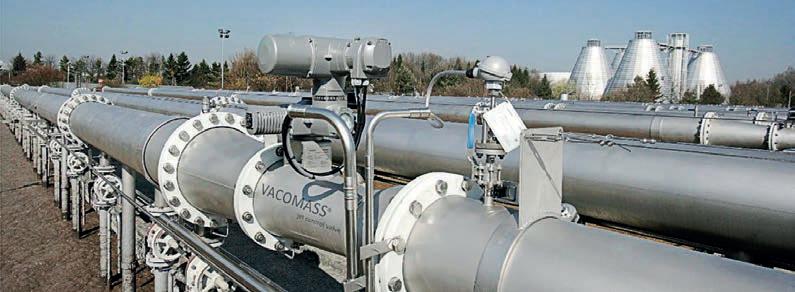
IN A WORLD where wastewater plants are squeezed between rising bills and tightening regulations, air isn’t cheap anymore. Aeration may be essential to biological treatment but it is also an energy black hole.
The solution? Smarter systems that do more with less — and prove it with data.
Enter Binder GmbH, a global name in precision flow measurement. Through its Pump and Valve Systems division, Binder has developed VACOMASS®, an intelligent aeration control system that helps plants reduce energy use, stabilise processes, and stay within effluent limits.
VACOMASS combines highaccuracy flow meters, low-pressure drop control valves, and an AI-driven controller that adjusts air delivery based on real-time demand. The result? Oxygen is supplied only when and where it’s needed.
Traditional aeration systems rely on manual settings or timers, often leading to over- or under-aeration. VACOMASS uses adaptive algorithms
to fine-tune airflow, helping operators maintain reliability while saving energy.
The system responds to dissolved oxygen levels, loading rates, and storm events, ensuring airflow aligns with biological demand. Plants using VACOMASS have reported energy savings of up to 20 per cent and improved diffuser life due to reduced pressure losses.
Built-in alerts and fail-safes also help operators avoid process disruptions, reducing site visits and unplanned downtime.
Keeping pace with regulation
Tighter discharge limits and decarbonisation targets are driving change in the wastewater sector. Aeration is a major energy user and a contributor to nitrous oxide emissions — a potent greenhouse gas.
VACOMASS supports compliance by maintaining steady oxygen levels and reducing the conditions that cause nitrous oxide spikes during nitrogen removal. Its control system adapts to seasonal trends and variable influent loads, keeping processes within
bounds without overcorrecting. When conditions shift unexpectedly, the system adjusts automatically — protecting performance and avoiding regulatory breaches.
At the Kiel wastewater treatment plant in northern Germany, VACOMASS has delivered measurable results. Operators eliminated ammonia peaks, improved effluent stability, and significantly reduced blower energy use.
The plant also improved nitrogen removal in anoxic zones by upgrading to jet control valves and dynamic controllers, which prevented carry-over. The retrofit allowed Kiel to enhance performance without major infrastructure changes.
Tuned for local challenges
Australia’s wastewater sector faces high energy prices, climate extremes and tight environmental controls. Binder’s VACOMASS system is designed to address these issues directly.
Its modular design allows for easy integration with existing infrastructure. The controller adapts to local conditions, while real-time data helps optimise performance and support long-term maintenance planning.
Binder’s team will be at Ozwater 2025 (stand R07 and R10) in May, sharing insights into how smarter aeration can support more stable, sustainable operations.
Wastewater operations are evolving fast. As expectations rise, so too must the intelligence behind the infrastructure.
For more information, visit bindergroup.info and pumpandvalve.com
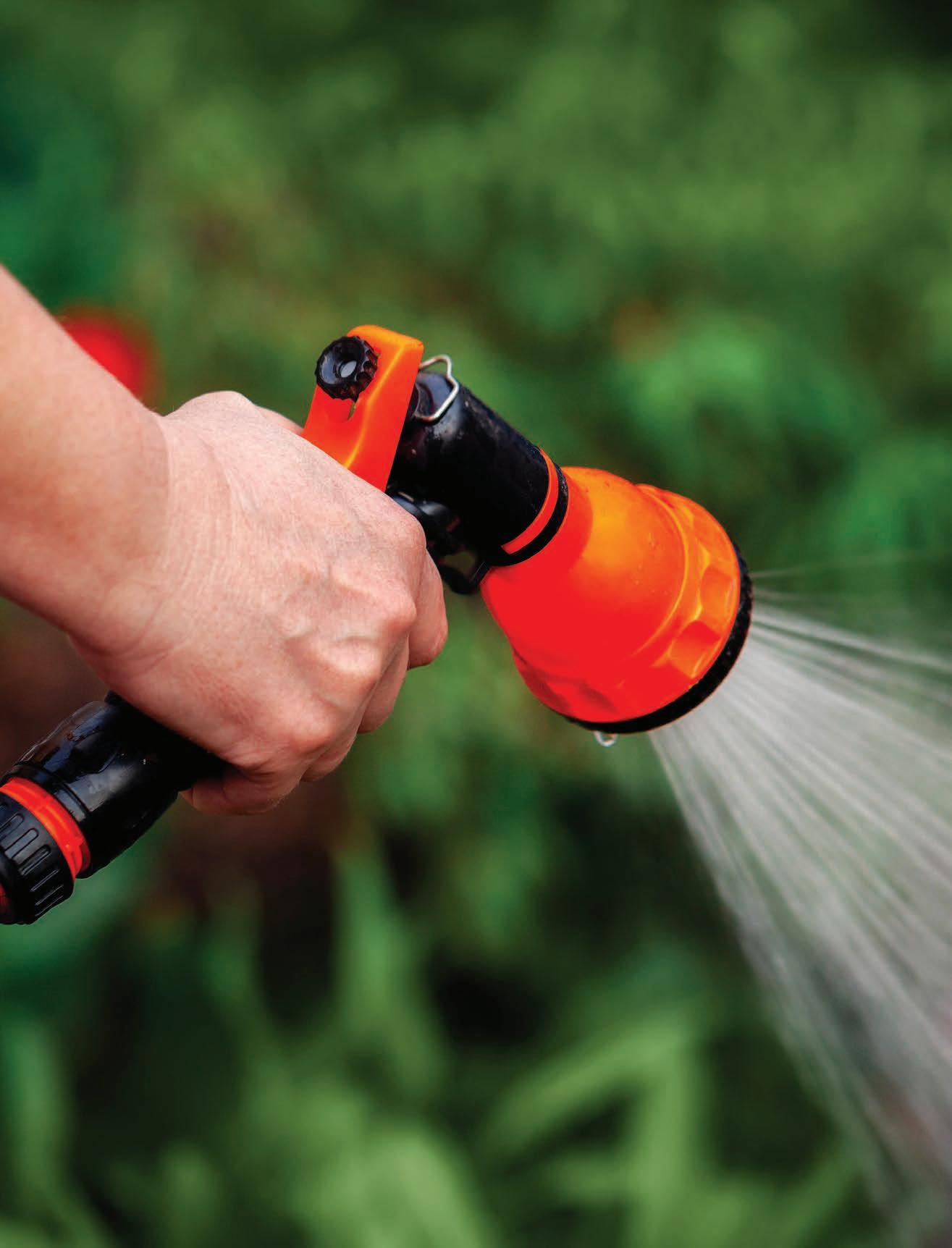
Companies like RemBind are focusing on the contaminants found in biosolids, including PFAS. Managing Director Richard Stewart provides an insight into RemBind’s solutions.
MANY PEOPLE WILL have heard of PFAS, officially known as per- and polyfluoroalkyl substances. Often dubbed the ‘forever chemicals’, these are a group of synthetic chemicals that accumulate in the environment, and there is some evidence to show that a subset of these compounds can cause toxicity to human health and the environment.
These chemicals have been used in firefighting foams, non-stick cookware, and waterproofing agents, among many other products.
What are biosolids?
Biosolids are nutrient-rich organic materials that result from treating raw sewage sludge during wastewater treatment processes. Biosolids can be beneficially reused on agricultural land, as they not only provide a valuable source of nutrients but can also help improve other soil properties.
However, wastewater treatment processes tend to also concentrate some environmental contaminants,
such as heavy metals and PFAS. The detection of PFAS contaminants in biosolids has received significant media attention recently because biosolids have been applied to some land and pastures for decades, and the associated PFAS loads have been largely uncontrolled.
Stabilisation of PFAS in biosolids – a viable approach
Stabilisation (also called ‘immobilisation’) refers to adding inert minerals to biosolids to ‘lock up’ the PFAS contaminants to prevent them from leaching into groundwater, where they can cause harm to human health and the environment. The immobilisation process is relatively cost-effective and practical, and the treated biosolids can still be used on agricultural land for beneficial reuse. The technology can also be applied in-situ to reduce PFAS uptake into plants.
Since 2013, RemBind has used its sorbents to lock up PFAS in soils, including at US Air Force bases. Now,


the same tech can be applied to biosolids to allow beneficial reuse in agriculture.
PFAS stabilisation in sewage sludge
Recent research¹ has highlighted the application of RemBind sorbents significantly reduced the uptake of PFAS into grass grown in biosolidsamended agricultural soil. This study helped validate applying sorbents in-situ to lower PFAS bioavailability in crops and decrease PFAS movement to vulnerable biota and water.
This independent data has given RemBind confidence that it can be used to stabilise PFAS in biosolids. It provides peace of mind to future generations that there exists a tech that can potentially help protect their food sources from PFAS.
Biosolids feature in the latest Australian PFAS guidelines The latest version of the PFAS National Environmental Management Plan (NEMP) was publicly released in March 2025 and specifically mentions biosolids for the first time. The PFAS NEMP provides nationally agreed guidance on managing PFAS environmental contamination, including preventing its spread.
While the reuse criteria are based on total PFAS concentrations, reducing the leachable concentrations using stabilisation represents a viable riskbased approach for the beneficial management of biosolids. It is crucial to continue exploring innovative strategies and technologies that ensure environmental safety and support the sustainable reuse of vital resources in agriculture.
For more information, visit rembind.com










Always on leak detection that scales economically with digital meter deployments, saving millions of litres of non-revenue water.


The Senate’s PFAS inquiry is making waves – will it be enough to clean our waters? Led by Senator Lidia Thorpe, the inquiry is highlighting the cultural, ecological, and health impacts of these ‘forever chemicals.’
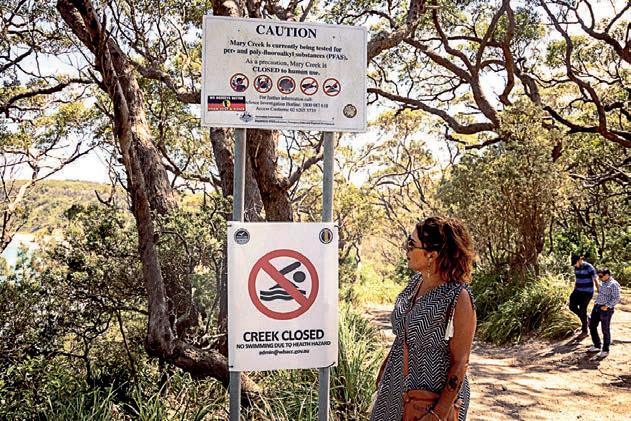
AUSTRALIANS TAKE PRIDE in a clean environment, but a silent crisis is emerging. Per- and polyfluoroalkyl substances (PFAS) have contaminated water, soil, and food, posing health risks. The Senate Select Committee inquiry led by Senator Lidia Thorpe aims to uncover the crisis’s extent and promote meaningful change.
Thorpe, a Gunnai, Gunditjmara, and Djab Wurrung woman, has deep cultural and environmental ties to water protection. She describes water as life, sustaining First Nations cultures in every way – physically, emotionally, and spiritually – as the veins that run through Country.
“Particularly for the matriarchs in our society, our story is in the water,” Thorpe said. “It is the veins that run through planet Earth, through our country, and like the veins in the mother’s body. If you disrupt or hurt those veins, the body will get sick. That’s why we must protect
our water as much as possible for future generations.”
Recognising the connections to First Nations communities’ cultural practices, storytelling, and identity adds urgency to the Senate inquiry, which Thorpe said should ensure solutions that extend beyond technical remediation to include justice for affected communities.
The scope of the crisis PFAS chemicals have been detected throughout Australia, polluting groundwater, rivers, and air. The contamination originates from decades of industrial use, especially in firefighting foams employed by the Department of Defence at military bases. Once released, these chemicals persist indefinitely, infiltrating the food chain and posing long-term health risks.
One of the most alarming cases recorded is at Wreck Bay, an Aboriginal community near Jervis
Senator Lidia Thorpe observes the warning signs for waterways in the Wreck Bay Aboriginal Community. Images: Office of Senator Lidia Thorpe
Bay in New South Wales. Residents have faced generations of exposure to PFAS due to contamination from firefighting foams used at nearby Defence sites. These foams have leached into local water sources, adversely affecting the community’s health and wellbeing.
Families in Wreck Bay have reported higher-than-normal rates of cancer and other illnesses according to the Australian Institute of Health and Welfare. Scientific studies have linked these conditions to prolonged PFAS exposure. Despite these evident risks, residents have struggled to access government-funded testing and remediation efforts, leaving them in a state of uncertainty and distress.
Thorpe described it as a cancer cluster where families have suffered from illnesses believed to be associated with PFAS contamination.
“We can’t pretend that it’s not hurting Country and it’s not hurting people, because it is,” she said.
“The community has fought for recognition and action, but progress has been slow, leaving many residents frustrated and fearful for their health.”
The Department of Defence and the Department of Infrastructure have appeared before the committee, outlining their efforts to remediate PFAS-contaminated sites.
However, Thorpe was critical of the slow progress.
“They have started remediation in Launceston,” she said, “but that is the only airport in the country where this is happening. We need this remediation everywhere.”
Thorpe said many affected communities have seen little tangible progress in addressing contamination. She also raised concerns about the lack of data collection on PFAS exposure, which she believes has been used as a
PFAS is everywhere in this country, and it’s affecting everybody.
”
delay tactic.
“From the 2018 Senate inquiry, blood tests were available for communities in Katherine and Oakey, but never for the Wreck Bay community,” she said. “There is no regular testing of water in this country, particularly our drinking water, for PFAS.
“We need regular water and blood testing, and more action on PFAS in airports.”
She said that without robust data, it isn’t easy to hold corporations and government bodies accountable or to implement policies that effectively mitigate the health and environmental impacts of PFAS.
Communities impacted by PFAS contamination have long called for greater transparency and government intervention. Thorpe said many feel abandoned, left to cope with the health and financial repercussions of exposure without sufficient support. The inquiry’s findings will determine whether the government acts or postpones necessary steps.
“People deserve to know what’s in their water,” Thorpe said. “We need honesty, accountability, and urgent action to ensure this doesn’t continue for another generation.”
Scientific warnings and a call for regulation
Health and environmental experts have also testified before the committee, warning that PFAS will continue accumulating in Australian waterways unless urgent intervention is taken.
Despite mounting evidence of harm, Australia continues to import PFAScontaining materials in packaging, textiles, and cosmetics. Experts argued that banning PFAS at the source is the only effective way to curb the crisis.
“The biggest message from those experts was: stop it at the source,”
Thorpe said.
Waste management has also emerged as a key concern. Even if PFAS is removed from drinking water, the filters used to capture the chemicals must be disposed of responsibly.
“At the end of the day, those water filters still need to go somewhere,” Thorpe said. “There seems to be no strategy for dealing with the waste.”
Without a national plan for the safe disposal of PFAS-contaminated materials, Australia risks transferring the problem from one area to another. The scientific community has called on the government to implement stricter PFAS regulations, including limits on drinking water concentrations.
A recent study at the University of New South Wales found that Australia’s drinking water limits on specific PFAS chemicals were significantly higher than those in the United States and Europe, in some cases by multiple orders of magnitude.
“We know that water PFAS contamination levels allowed in Australia are 400 times higher than those in the US,” Thorpe said. “That should alarm everyone.”
The path forward
The Senate inquiry is ongoing, and more hearings are planned, including a visit to Launceston in March to examine remediation efforts. This hearing had appearances from Launceston Airport, TasWater, the Department of Natural Resources and Environment Tasmania, the Minderoo Foundation, and Air Services Australia.
Thorpe said the ability of affected individuals to contribute directly to the inquiry ensures that real stories are heard and considered in shaping future policies.
“If you need assistance putting in a

ceremony at the Wreck Bay Aboriginal Community.
Wreck Bay is not far from Defence Force land in Jervis Bay.
skills – you can send in a video or a voice submission.”
She hopes that the committee’s recommendations will lead to meaningful government action.
“Our recommendations are only as good as what happens after that,” she said. “We could come up with 100 recommendations, but at the end of the day, it’s what the government will implement.”
The stakes are high. PFAS contamination is linked to health issues such as cancer, immune dysfunction, and developmental disorders. Thorpe said affected communities want action and accountability, not just reports. If Australia does nothing, future generations will face the consequences.
“This isn’t just about policy or science – it’s about people’s lives, health, and future,” she said. “We cannot afford to keep pushing this issue aside while communities suffer. The time to act is now.”


Certifications matter – but only when they reflect how water is actually used in the home, not just in the lab.
IF THERE’S ONE thing Australians hate, it’s paying for something that doesn’t do the job. From tradie tales to dodgy gadgets, we’ve all been stung. So when it comes to something as serious as PFAS in drinking water, no one wants a product that promises protection but delivers a false sense of security. Per- and polyfluoroalkyl substances – PFAS, or “forever chemicals” –have haunted the water conversation for decades. They don’t break down; they bioaccumulate and are linked to a growing list of health concerns. Exposure is so widespread that studies suggest up to 96 per cent of the global population has PFAS in their blood.
Initially developed for their resistance to heat, water, and oil, PFAS compounds were used in everything from non-stick cookware and food packaging to firefighting foams. But their durability is precisely what makes them dangerous. Once released, they linger – travelling through soil, air, and water, contaminating ecosystems and accumulating up the food chain. The problem is far from theoretical. In 2024, the Stan documentary How to Poison a Planet, led by investigative journalist Carrie Fellner and produced in collaboration with The Sydney Morning Herald brought national attention to PFAS contamination in places such as Jervis Bay. The documentary
followed years of community advocacy and deepened public awareness of the risks linked to longterm exposure. Its release coincided with renewed scrutiny from the Federal Government, including the reactivation of the Senate Standing Committee on PFAS. With growing political and media pressure, regulatory agencies began responding. Australians started asking tougher questions about what’s in their water, how it’s treated, and what kind of protection they need.
Standards under scrutiny
Australia’s National Health and Medical Research Council (NHMRC) has since proposed new drinking water guidelines
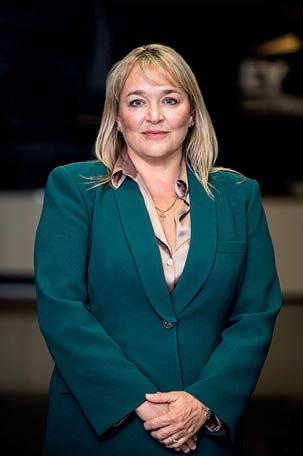
PFAS are a big puzzle that many in the water industry are seeking to solve.
Image: Francesco Scatena/stock. adobe.com
that align more closely with international benchmarks. The most significant change involves PFOS (perfluorooctane sulfonate) – one of the most studied PFAS compounds – where the allowable concentration would drop from 70 nanograms per litre (ng/L) to just four ng/L. Other compounds, such as PFOA (perfluorooctanoic acid), and PFHxS (perfluorohexane sulfonate), are also included in the revised guidelines, signalling a broader shift toward precaution.
In the United States, the allowable limits are even stricter. The Environmental Protection Agency has proposed enforceable maximum contaminant levels for PFOS and PFOA at just four parts per trillion. The comparison underscores how urgently filtration systems in Australia must evolve to meet draft targets and anticipate where the science is heading.
Public health experts have welcomed these proposed changes, but they also highlight the need for filtration systems that can perform to these tighter standards – not just on paper but in people’s homes.
From lab tests to laundry taps
Suzanne Dodds is the founder of Complete Home Filtration.
Image: Complete Home Filtration
Suzanne Dodds, a long-time advocate for better household water treatment, has spent years navigating this space. Since 2018, her team at Complete Home Filtration has focused on developing a system to remove PFAS at the point where water enters the home. They aim to deliver consistent, reliable performance
under real-life conditions, not just laboratory scenarios.
“Too often, filtration systems are designed to pass a test, not solve a problem,” Dodds said. “And when those tests don’t reflect how people actually use water, the certification risks becoming a boxticking exercise.”
A typical Australian household uses 600 to 1000 litres per day – far exceeding the volumes under which many certified systems are tested. Dodds said it’s not uncommon to find whole-home systems certified for less than 5000 litres total. That might pass a technical threshold, but it’s functionally useless in a real-world setting, where that amount of water could be used up in less than a week.
What’s in a certification?

Certifications such as NSF and IAPMO (global organisations that certify water treatment products against health and safety standards) help, but they can mislead without context, Dodds said.
Their marks indicate a product has been independently tested, often to confirm it reduces specific contaminants such as PFAS. However, testing conditions can vary significantly, and consumers need to read the fine print.
“It’s not just about having the badge,” Dodds said. “The certification standards allow manufacturers to choose the conditions under which their systems are tested. A system might pass at a flow rate of four litres per minute but be functionally useless in a normal household. Some systems are certified for only a few thousand litres, which might sound like a lot, but a family of four can use that in a week.”
These nuances matter. Consumers are increasingly looking for proof – not just marketing claims – that their systems will last, perform

consistently, and deliver safety across all taps in the home.
From product to protection: Getting filtration right
As PFAS awareness grows, so does the demand for solutions. Dodds said more tradespeople and resellers are entering the market – many with good intentions – but they don’t always have the technical background to interpret certifications or evaluate filter performance.
“There’s a genuine desire to help, and that’s a good thing,” Dodds said.
“Filtration is a specialised field, with complex chemistry and performance standards behind it. It’s essential to go beyond marketing claims and understand how systems are designed to work.”
She said consumers shouldn’t just choose a product, they should choose a knowledgeable supplier who can match the right system to their household’s needs.
One point often overlooked is the importance of whole-home or point-of-entry filtration. Undersink systems are limited to a single tap and don’t treat water used for bathing, cooking, or brushing teeth.
“There is growing science that suggests PFAS doesn’t just enter your body through drinking water,” Dodds said. “It’s also absorbed through the skin when you shower, bathe or even wash your hands. That’s why wholehome systems are so important.”
Dodds said one of the most common mistakes people make is assuming
Systems like this help to minimise the impact of pollutants and contaminants for an entire home. Image: grigvovan/ stock.adobe.com
that water safety starts and ends with the kitchen tap. But the risk remains unless every drop is filtered before entering the home – often in ways most people don’t even consider.
Bridging the gap between lab and life
Years of research, field trials, and system design have helped Dodds’ team fine-tune a solution for Australian homes. The latest systems from Complete Home Filtration are now undergoing international certification, with designs built for high flow rates and realistic usage volumes. Their development has involved support from academic institutions and extensive field testing in PFAS-affected communities.
Dodds believes that addressing PFAS at the domestic level is just one piece of a much larger puzzle – infrastructure, regulation, and public awareness must also evolve. In the meantime, people need trusted, practical solutions to protect their families.
“We’ve done the research, built the systems, and tested extensively on PFAS impacted sites with internationally certified labs for large volume performance,” Dodds said.
“Too many filters are built for lab conditions, not people’s lives. Every Australian should be confident that what’s coming out of their tap isn’t just clear, but clean.”
For more information, visit completehomefiltration.com.au
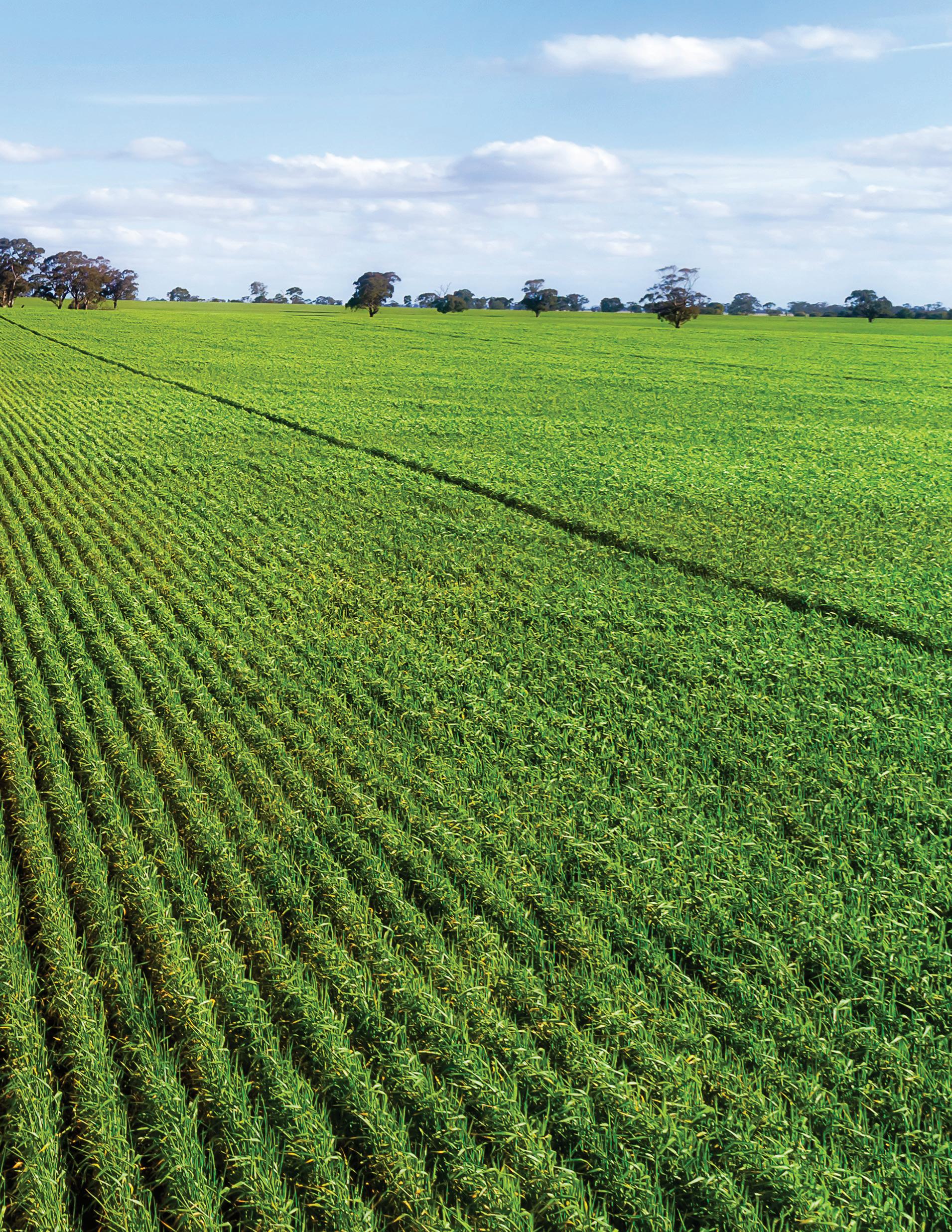

As the driest state on the driest inhabited continent, South Australia is no stranger to sustained periods of hot and dry conditions.
SINCE THE MILLENNIUM Drought, which primarily impacted southeast Australia from 2001 to 2010, South Australians have significantly reduced their per capita water usage. This permanent shift now saves more than 100 billion litres per year compared to if these water efficiencies weren’t adopted.
The importance of this change cannot be understated after Adelaide experienced its driest year since 2006 in 2024, which continued into the early months of 2025 and prompted an increase in overall water demand.
Despite these dry conditions, SA Water has acknowledged the community’s astute approach to water use, combined with the diversity and flexibility of the city’s water sources, has been critical in ensuring a continued secure supply.
Adelaide’s security of supply is fundamentally underpinned by generational investments in water infrastructure following the Millennium Drought.
Most notably, a climateindependent source of water in the form of the Adelaide Desalination Plant, located in Adelaide’s southern suburb of Lonsdale, ramped up its production in early 2025 to shore up the city’s water supply.
Since it started producing water in 2011, the Adelaide Desalination Plant has primarily operated in minimum production mode, with this operating pattern helping maintain its infrastructure and performance while keeping it ticking over in case production needs to swiftly ramp up.
The plant has already been called upon for additional water, helping
drought-affected farmers around Australia through the state and Federal Government’s Water for Fodder program during 2019-20.
Under the program, farmers in the southern connected Murray-Darling Basin were able to purchase South Australian River Murray water at a discounted rate, which was made possible by the plant increasing its production to 40 gigalitres during this year to enable the release of the equivalent amount from the River Murray.
SA Water’s Senior Manager of Water Futures and Security Dr Ashley Kingsborough said this operational flexibility enabled the plant to step in when it was needed earlier this year to augment Adelaide’s water supply amid extremely dry conditions.
“We had experienced the lowest amount of water inflows to our reservoirs across the Mount Lofty Ranges for around 40 years, and their combined levels were at their lowest for more than 20 years,” Kingsborough said. “The drier and hotter it gets, the more water our customers use as well – compounding the impact of this low inflow to our reservoirs.”
At a time of such dry conditions, this is exactly what the Adelaide Desalination Plant was built for. Kingsborough said this ability to draw on this climate-independent source of water ensured its customers had a consistent water supply throughout the warmer months.
“During peak periods of demand, the plant was producing up to its total daily capacity of 300 million
The Adelaide Desalination Plant has been vital for providing a climateindependent water source for the city.
Image: SA Water
litres of water, helping balance our water resources and network storages,” he said. “In addition to producing more water at the plant, we also optimised our use of water from the River Murray by transporting it through our major pipelines to top up our metropolitan reservoirs.”
As Australia moves into a drying climate, desalination and other climate-independent sources will have an increasingly important role in securing water supplies.
Drinking water produced by the Adelaide Desalination Plant is pumped along an 11-kilometre pipeline to storage tanks at SA Water’s Happy Valley Water Treatment Plant, where it’s blended with treated water from the nearby reservoir.
The interconnection of SA Water’s network of pipelines and pump stations provides the ability to supply drinking water produced at the Adelaide facility to homes and businesses from Aldinga in the city’s southern suburbs right up to Elizabeth in the north.
The Adelaide Desalination Plant has supplied more than 230 billion litres of drinking water to homes and businesses across Adelaide since it was first switched on in 2011.
For more information, visit sawater.com.au

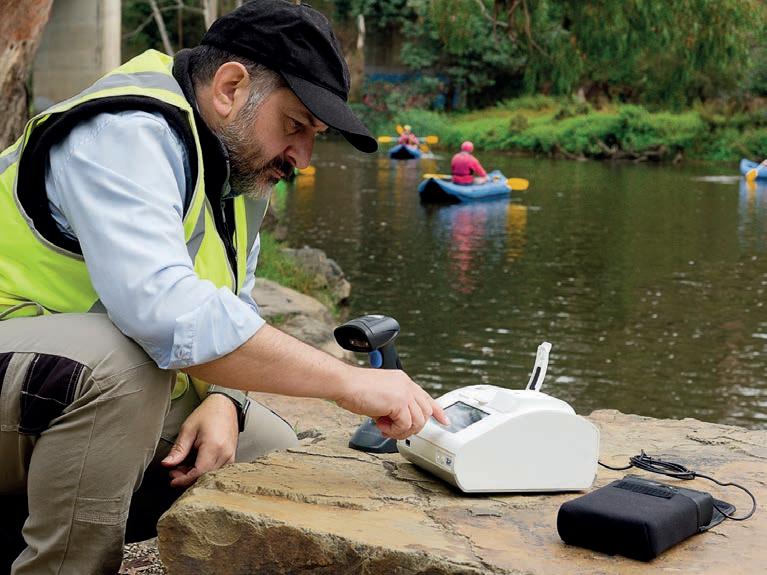
Troubled waters run clear with rapid tests, as a new wave of diagnostic tools brings speed and precision to pollution detection.
WHEN IT COMES to managing water quality, timing isn’t just everything – it’s the whole damn problem. The faster you know what’s in your water, the quicker you can do something about it. For decades, however, the water industry has been stuck waiting days for lab results, squinting at general indicators like E. coli, hoping they tell the whole story. Spoiler: They don’t.
Now, a quiet revolution is brewing in Australia’s back paddocks and lab benches, bringing lab-quality molecular diagnostics directly to the field.
ZiP Diagnostics is a Melbournebased biotech firm focused on making molecular testing faster, cheaper and more accessible. Geared initially towards human health in remote and resourcelimited settings, its portable nucleic acid amplification technology now finds itself squarely in the crosshairs of one of Australia’s most complex
infrastructure sectors: water.
In partnership with Bio2Lab, an environmental consulting company led by Dr David Sharley, the two outfits are changing how the industry thinks about detection, response, and accountability.
A new test in town
The flagship application? Rapid on-site testing for human Bacteroides – a precise indicator of sewage contamination.
It’s a big step from traditional E coli testing, which is nonspecific and cannot distinguish between bird, dog, or human faecal matter. That is why Corrado Addessi, the head of marketing and sales at ZiP Diagnostics, is working with his colleagues to help the industry achieve this goal.
“Our goal was to move molecular testing out of the lab and into the hands of field technicians,” Addessi said. “You don’t need a science
Corrado Addessi performing upstream testing of the Yarra River Images: ZiP Diagnostics, Bio2Lab
degree or years of lab experience to get a result anymore.”
Using ZiP’s portable diagnostic platform, utilities and councils can generate results in as little as 20 minutes– no esky, no courier, no lab lag. That kind of turnaround fundamentally shifts how spill events and contamination risks are managed, particularly when human health is on the line. ZiP is also pairing its rapid microbial testing with real-time data transmission and geospatial mapping to deliver an innovative field reporting system.
Changing minds, not just methods While the technology is ready, meaningful change in the water industry doesn’t happen overnight. Integrating rapid molecular testing into routine operations requires more than technical validation. It demands cultural buy-in and trust.
“There’s still some hesitation,” Addessi said. “We’re asking people to rethink how they do their job. That takes time, training and trust.”
Establishing trust, both within the industry and among the communities it serves, is critical.
Addessi said utilities and councils are accountable not just for infrastructure but also for public confidence in how they manage it. This demonstrates how providing timely, accurate data that can help guide decisions is part of building that credibility.
Sharley said the industry’s move to faster, more specific testing is a natural evolution of its commitment to safeguarding public health and the environment.
“For 50 years, we’ve relied on the same generic indicators,” he said. “They pick up any warm-blooded animal. What the industry needs now is specificity, speed and cost-efficiency. We approached
ZiP because they had the tech to do that.”
According to Sharley, Bio2Lab is already working closely with local governments to integrate the platform into stormwater harvesting projects, ensuring that the reused water is safe from the outset. Many of these systems are installed
The molecular platform isn’t limited to one test. ZiP is building an expandable menu of assays that can be deployed in the field, adding flexibility to a growing list of use cases – from urban stormwater and beach monitoring to livestock and independently.”

ZiP-P2 displaying a positive result for Bacteroides.
For Bio2Lab, the test kit is just the beginning of a broader transformation in environmental




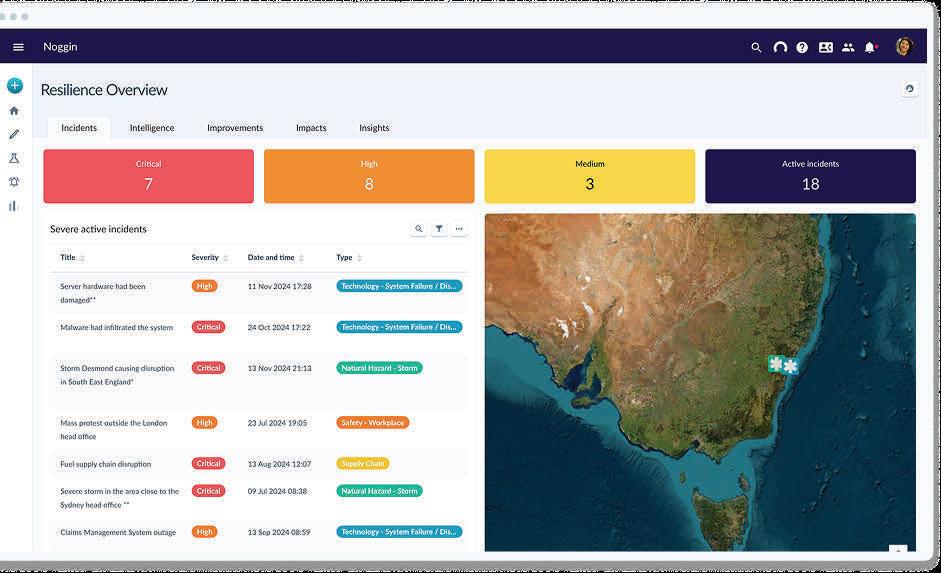



In Australia, water infrastructure organisations aren’t strangers to attacks on their assets. But recent amendments to the Security of Critical Infrastructure Act (SoCI) give new urgency to preventing incidents and maintaining risk management programs. To comply, water infrastructure organisations can turn to Noggin’s integrated resilience software, to help prepare for and respond to business disruptions and critical events. The Noggin platform seamlessly combines 10 solutions into one, easy-to-use system, with solutions for: operational and third-party risk management, business continuity, crisis & emergency management, operational resilience, and safety & security operations.

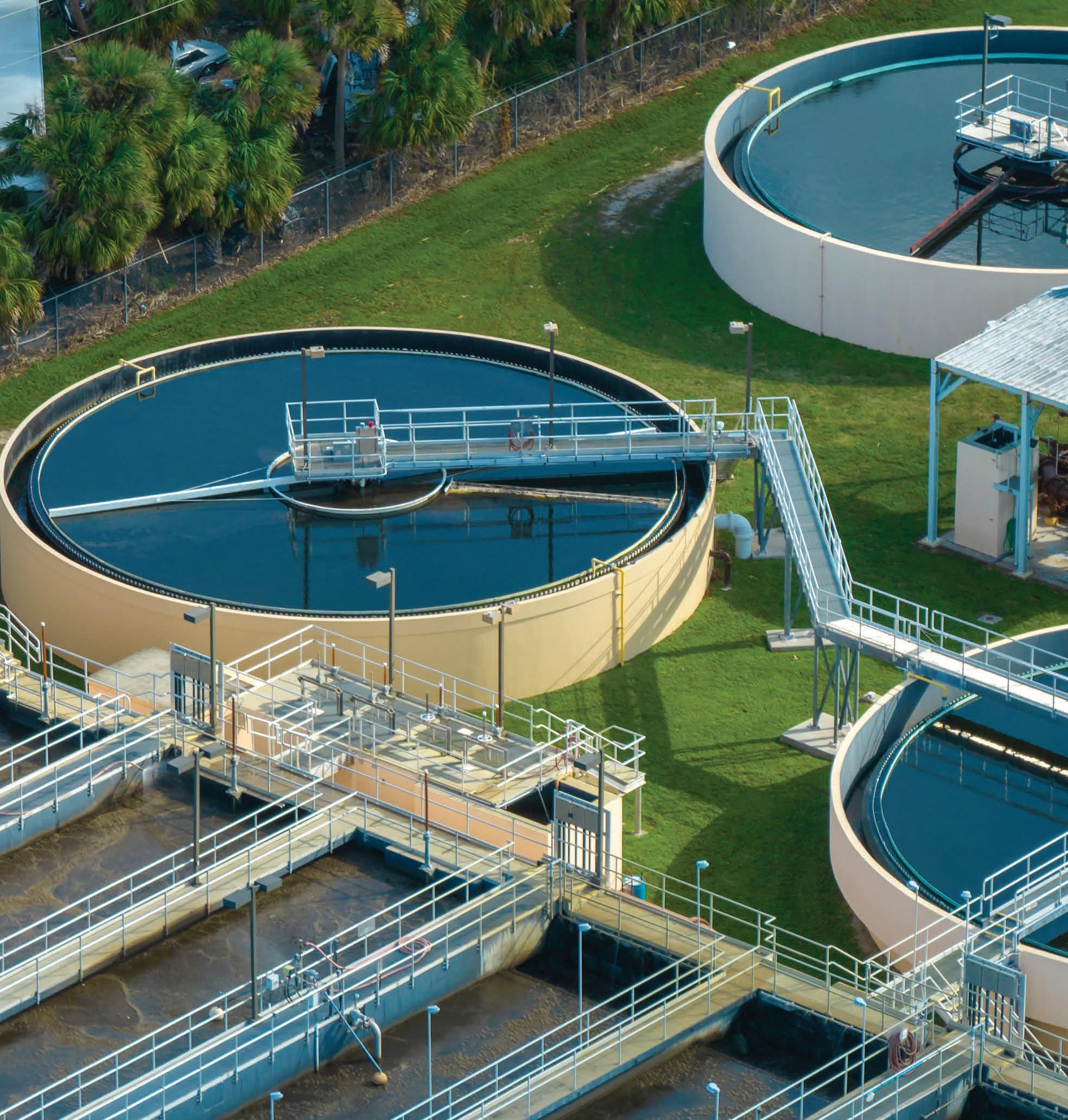
Learn why Australia’s water infrastructure organisations choose Noggin to help strengthen their resilience against business threats www.noggin.io
Australia’s wastewater industry spends billions annually, and choosing the right technology and partners is key to staying competitive in an evolving landscape.
sector is facing complex challenges, including rising operating costs, adopting measures to enhance water security and sustainability, and unpredictable market forces.
“It’s estimated that Australia spends around $9 billion each year on water and wastewater treatment services,”
Martin Broglia, Managing Director of Bonfiglioli Australia and New Zealand, said. “To remain competitive in the face of these challenges, Australia’s wastewater plants are exploring solutions that enhance productivity, drive efficiency, and reduce costs.”
Local wastewater plants want solutions that reduce energy consumption and minimise downtime and maintenance costs.
“Water scarcity is a big issue, so plant equipment must be reliable and effective in preventing contamination of waste streams while also boosting plant efficiency,” Broglia said.
The power of a great gear motor Engineers are demanding solutions that can handle high shock loads, corrosion and contamination, and the space constraints typical of treatment plants, in addition to addressing overall plant operations.
The key is to select the right gear motor system that meets power demands and delivers the correct output torque.
“It’s also important to select a solution that offers a long service life, can handle high loads and extreme operating environments, and is easily tailored,” Broglia said. “Bonfiglioli offers a range of accessories that enable us to customise the solution
to the customer’s application, such as desiccant or pressure filter breathers that prevent moisture entry into the drive system.”
He highlighted three solutions that have proven effective in wastewater applications: The HDP Series parallel shaft gearboxes, HDO Series bevel helical gearboxes, and the 300M Series planetary gearboxes. These gearboxes are designed to deliver reliability, speed control, and flexibility of transmissible power, making them versatile and effective.
“With low maintenance requirements and energy-efficient operation, they are also costeffective,” Broglia said.
Smart tech for smarter operations
Integrating innovative electronic controls for remote monitoring has become an increasingly prominent trend within various industries. This technological advancement enables plant managers to supervise operations more efficiently and effectively from a distance.
Bonfiglioli contributes to this evolution by supplying a range of add-on solutions designed to enhance operational oversight. These solutions provide plant managers with automated and realtime readings of essential equipment metrics such as load, vibration, and oil levels.
“This instrumentation reduces the burden on our customers’ teams,” Broglia said. “It also helps plant operators optimise plant maintenance, performance and efficiency. By leveraging these automated systems, managers can promptly detect anomalies
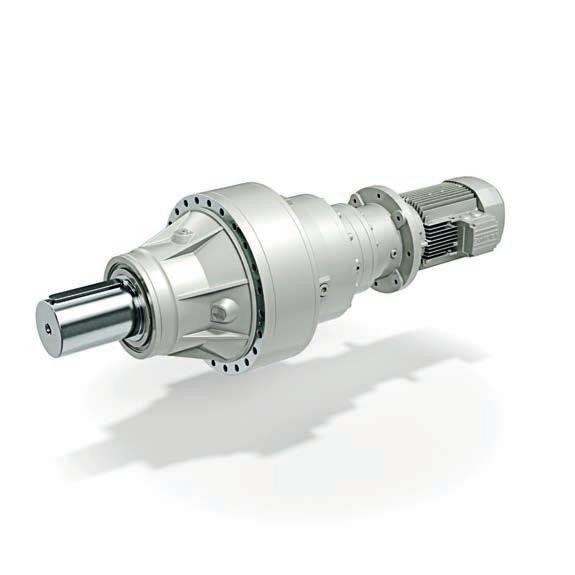
all heavy-duty applications requiring compact solutions.
Image: Bonfiglioli
overall productivity.
Choosing the right partner In today’s competitive landscape, Broglia stresses the importance of collaborating with specialist partners to achieve optimal results. These partnerships are essential for leveraging expertise that enhances effectiveness and efficiency. Working with experts, organisations can access knowledge and solutions not readily available in-house.
“The value of such alliances cannot be overstated. They enhance creativity and problemsolving capabilities and ensure that all project goals are met with high standards of quality and effectiveness,” Broglia said.
He is optimistic about Bonfiglioli’s role in the Australian wastewater sector.
“Our investment in R&D and our relationships with key players in the industry enables us to develop the innovations and solutions that make a tangible difference to our customers and their businesses.”
For more information, visit bonfiglioli.com/australia
From rain to gain – how weathered wisdom from the UK and hard-won lessons in Australia could reshape wastewater resilience.

QUEENSLAND’S 2012 FLOODS made headlines for their devastation – but for one engineer on the ground, they also sparked innovation. As the swollen creeks receded and the cleanup began, Brian Moloney was asking a more profound question: Why had the system behaved so differently from how it was modelled?
This disconnect between simulation and reality eventually gave rise to StormHarvester. More than a decade later, Moloney is bringing the company’s AI-powered solutions back to Australia, armed with realworld learnings from the United Kingdom’s utility frontlines.
When the 2012 deluge struck, Moloney, now Chief Executive Officer of StormHarvester, was living inland from Brisbane. Working with South Burnett Regional Council in the aftermath, he saw a stark gap between expected and actual network behaviour.
“Everything was kind of simulated in digital twins,” he said, “but those digital twins didn’t have a great relationship to what was actually happening in the sewers.”
Flooding appeared in places the models hadn’t predicted, and the infrastructure responded far less effectively than anticipated. That experience exposed a fundamental issue: drainage systems were reactive. The infrastructure remained passive despite humans watching weather forecasts and bracing for storms.
“We were all watching the weather forecast, but our infrastructure wasn’t. It didn’t optimise, it didn’t prepare,” Moloney said. “That was where the idea came from – to build a drainage system that wasn’t blind to what was coming. We started tinkering with prototypes, linking them to weather data and trying to drain tanks ahead of the rain. That was the first time it felt like we could shift from reaction to prevention.”
The team at StormHarvester has considerable experience in both software development and wastewater management. Images: StormHarvester
Engineering insight meets AI StormHarvester’s early work focused on retrofitting intelligence into existing infrastructure—linking weather forecasts to real-time control of storm tanks and sewer systems. The aim was to optimise network performance and free up capacity before major rainfall. Once seen as ambitious, this idea of proactive control is now rapidly gaining traction.
Moloney, who holds a background in engineering and wastewater network operations, co-founded StormHarvester with the goal of fusing domain expertise with machine learning. The company has since become a specialist in AI-driven sewer monitoring, alarm rationalisation, and predictive network control.
With a team of over 60, including more than 40 software engineers focused on AI and data analytics, StormHarvester’s value lies in its dual focus: technical capability and operational context. One of its early innovations was applying rainfall radar data to drainage modelling— but not just in raw form.
“We’re very much domain-specific

using the rainfall, but not strictly speaking your regular radar files. It’s a catchment-based approach, layering your catchment over your radar grid to give you the most accurate rainfall model possible.”
That precision feeds into the machine learning models, which grow smarter with every confirmed outcome.
The UK case study
While StormHarvester may have been born in Queensland, its realworld testing ground was the UK. There, increasing regulatory scrutiny of environmental performance and pollution events led water companies to deploy sensor networks at an unprecedented scale. One utility alone has installed close to 40,000 monitors.
StormHarvester now hosts data from more than 230,000 sensors within its platform, making it one of the most extensive AI-backed datasets in global wastewater management.
“Machine learning thrives on big data,” Moloney said. “But it’s not just about having the data, it’s about turning it into operational action. We get feedback from operators who confirm when blockages were found and cleared. That feedback loop helps the system learn. We now have 8000 confirmed blockages in our dataset.”
This confirmation loop is essential. Rather than training algorithms in a vacuum, StormHarvester refines its models using validated field reports. Over time, this has enabled the platform to deliver greater accuracy in detecting infiltration, identifying asset deterioration, and prompting timely interventions.
The result? Nine of the UK’s 12 major utilities now use the system as part of standard operations. Moloney said these tools have often allowed them to reduce costly site

what the utility was upgrading.
Beyond dashboards: Delivering operational action
One of StormHarvester’s central messages is that sensor networks alone are not enough. Many utilities are collecting more data than ever but insights are often lost in the noise. Utility staff can struggle to turn that information into action without an interface between the data and decision-makers.
“One of the key learnings is that you need something between the data and the operator,” Moloney said. “You might install thousands of sensors, but unless a platform makes sense of it, you’ll be overwhelmed. The goal is to turn that raw data into a plan – get the right crew to the right place at the right time. That’s what prevents tomorrow’s pollution event. And that’s what we’re hoping to help deliver in Australia.”
StormHarvester’s platform addresses this through AI-powered alerting and alarm rationalisation. It learns each network’s baseline behaviour and flags anomalies – whether due to blockages, infiltration, or asset failure – before they escalate. Operators receive a prioritised list of actions based on real-time performance and weather data.
Avoiding déjà vu in Australia
Australia is no stranger to digital water programs. Smart meter rollouts, pressure monitoring, and leak detection have featured in both urban and regional utilities. But Moloney said the challenge ahead is different: interpreting complex,
For more information, visit stormharvester.com approach.
the same mistakes that we made in the UK early days around sensor deployment, what works, what doesn’t, what density of censoring you need, what sensor locations are critical, what outcomes are possible.”
Rather than treat each deployment as a blank slate, StormHarvester is positioning itself as a conduit between utilities across hemispheres. The company has already connected several Australian utilities directly with their UK counterparts, enabling direct peer learning between operations teams that manage similarly scaled programs.
Moloney doesn’t view this as a market expansion exercise. Instead, he describes the company’s role as one of collaboration, experiencesharing, and long-term partnership.
“We’re not in this for a quick buck,” he said. “It’s about protecting the environment and communities and ensuring the network works as efficiently as possible.”
He will visit several Australian utilities before his Ozwater appearance in May. The message is simple: the tools are ready, and the UK’s experience is available–now it’s a matter of partnership.
“We don’t need to relearn what the UK already went through,” Moloney said. “We’ve seen what works, fails, gets traction, and gets ignored. This isn’t about selling software but building long-term relationships that improve environmental outcomes. That’s what makes it exciting to come back home and share what we’ve learned.”
With a little help from artificial intelligence, water utilities are adapting faster, predicting more and wasting less.
THERE’S A FINE line between drowning in data and riding the digital wave. For water utilities trying to navigate an era of climate volatility, ageing infrastructure and rising public scrutiny, that line is getting thinner by the day. But what if artificial intelligence (AI) could throw them a lifebuoy – one built not of hope but of real-time insight, predictive power and smarter decision-making?
Adasa Systems thinks so. With close to 40 years in water technology, the company has become a familiar name across Europe and Latin America. Founded in Spain as a systems integrator, Adasa has evolved into a digital water pioneer, delivering science-backed solutions including advanced water quality monitoring systems, early warning networks, digital twins and predictive analytics platforms.
With the company expanding into the Asia-Pacific region, Australia’s water sector is beginning to
pay attention. Here, Adasa isn’t just selling a product. It offers a framework for how AI can coexist with sustainability goals, legacy infrastructure, and increasingly complex regulatory environments. From AI-driven dam monitoring to flood risk forecasting and smart sewer systems, Adasa’s global portfolio is underpinned by a belief that the data already exists. The water industry just needs better tools to unlock it.
Why AI matters now Smart technology is often presented as a silver bullet. In water, it’s more like a scalpel –precise, adaptable, and, when properly applied, transformative.
David Hardisty, Adasa’s Country Manager for Australia, said that smart technologies offer a chance to shift from reactive to proactive management.
“We’re seeing comprehensive
The Dam360 SaaS solution enhances dam surveillance monitoring with advanced data analytics. Images: Adasa

Hardisty said. “From predictive analytics to smart sensors and real-time telecontrol, these tools help anticipate critical events like droughts or floods and reduce environmental impact.”
Smart grids equipped with AI are helping water utilities cut losses through leak detection and optimisation. Meanwhile, renewable integration, such as solar, wind, and biogas, is reducing the carbon footprint of water infrastructure.
“The real value comes from combining IoT, AI and water sciences into a unified platform,” Hardisty said. “That’s what enables resilient, modern water management that aligns supply with unpredictable demand.”
From legacy to leading edge Still, integrating AI into long-standing water systems isn’t without its pain points. Many utilities wrestle with outdated SCADA (Supervisory Control and Data Acquisition) systems, fragmented datasets, and staff who are untrained in the fundamentals of managing an AI system.
“Legacy systems often lack the infrastructure needed to support continuous data flow,” said Frederic Chauland, Adasa’s Principal Technical Lead. “That makes it hard to implement AI algorithms that depend on fresh, high-quality information.”
He said data integration is the biggest hurdle – but not the only one. AI tools must also be interoperable with existing hardware and software. Trust is another challenge.
“Engineers are reluctant to rely on models they don’t understand,” Chauland said. “That’s why we design AI that explains itself – why it flagged a dam alert, what triggered it, and which failure modes were linked.” Skill gaps and budget constraints round out the barriers. Yet Adasa’s
decades of experience operating and maintaining monitoring assets across the water cycle — watersheds, catchments and urban water networks— provides unique insight into the gaps AI must address, aiming to future-proof solutions for operators of all sizes.
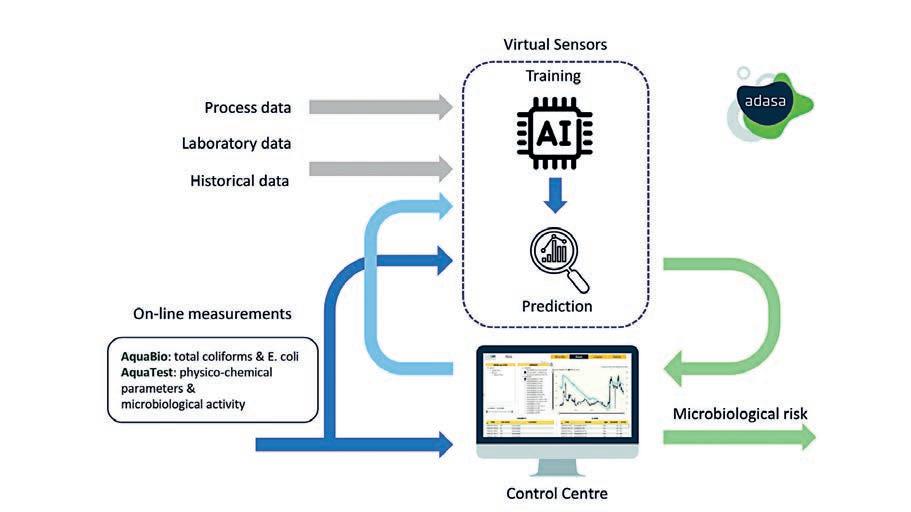
Smarter, not thirstier AI may offer solutions, but it also raises a paradox: Can a waterintensive technology help solve water scarcity?
“AI has a water cost, especially in data centres, but it doesn’t have to be a drain,” said Dr Mohsen Askari, Adasa’s Head of Consulting. “When used thoughtfully, it becomes a net saver.”
Askari said Adasa’s AI models are intentionally designed to minimise computational demand. Tools such as Dam360 and the La Rioja Hydrological Model use only the most relevant data points, keeping computational effort to a minimum without sacrificing performance.
“Efficiency starts with the model itself,” Askari said. “We simplify datasets, optimise AI models’ architecture, and run them on renewable-powered servers.”
The company also prioritises edge computing, reducing the need to send all data to a central hub. Combined with AI-powered anomaly detection, early warning systems and realtime leak alerts, the result is smarter resource use – upstream and down.
A future in real time Looking ahead, AI won’t just be another tool in the box. It may become the operational heart of water systems.
“We’re moving toward selfoptimising networks that act like 24/7 water operators,” Askari said. “Adasa’s Stormguard integrates real-time sewer and drainage data
with weather forecasts and models, to adjust flows and pressures, helping prevent failures and optimise network performance. The system is already in use across projects like La Rioja, EPSAR, Burgos, and iBathwater.”
There is also evolution at the customer end of a smarter water network. Personalised water assistants could soon give households tailored advice on saving water and cutting bills. Meanwhile, small utilities and farmers may access sophisticated analytics via low-cost, open-source platforms.
Digital twins represent another leap forward. “You could ask it to simulate a 50-year flood, or model an earthquake’s impact on a dam, and it will show you where the vulnerabilities are.” Askari said.
Adasa is already demonstrating the practical side of this vision. “Virtual

AI-powered virtual sensors can assess microbiological risks in water at a low cost.
are replacing costly lab tests with AI models that predict contaminants like E. coli in real time,” Askari said.
“Our Dam360 platform, also uses AI to analyse decades of data and predict structural risks in dams, giving operators real-time warning before failures occur.”
A new normal
For all its technological ambition, Adasa’s approach reflects a core belief: AI doesn’t necessarily replace people but empowers them. Engineers, planners and operators gain tools that amplify their judgement rather than override it.
With faster access to reliable insights, teams can spend less time reacting and more time strategising. AI clears the clutter, surfacing what matters most – whether that’s identifying a weak pipe segment before it bursts or simulating how a new policy might impact rural irrigation.
Adasa’s water quality monitoring systems measure both microbiological and physicochemical parameters of water in real time.
The opportunity is even greater for smaller utilities and regional councils. AI levels the playing field, putting advanced analytics within reach of teams that lack in-house data scientists or multimilliondollar budgets. It opens the door to smarter forecasting, more transparent reporting, and community engagement based on facts, not guesswork.
“The future of water is no longer about reacting faster,” said Askari. “It’s about knowing what’s coming, and being ready before it hits.”
For more information, visit www.adasasystems.com
The renewal of this trunk water main in the Hunter Valley reinforces critical infrastructure, ensuring reliable water supply and efficiency for years to come.
THE $7M LOUTH Park Trunk Watermain Renewal project was recently completed by the Eire Constructions Hunter team, marking a significant achievement for its team and a positive project outcome for client, Hunter Water. This project was a major step in improving the reliability and efficiency of the region’s water distribution system, particularly through the replacement of large-diameter pipelines, which are integral to meeting the growing demand for water services.
The scope of the project involved the removal of 2800 metres of redundant piping, which was replaced with a modern trunk watermain capable of handling greater volumes of water. One of the main objectives of replacing this asset was to reduce water loss from this pipe. This large-diameter pipeline is a critical infrastructure element that enhances the water supply and distribution capacity for local communities. By upgrading this system, the project has ensured that Hunter Water can continue to meet the needs of its customers with a more reliable and efficient water delivery system.
Large-diameter pipeline expertise:
The backbone of the project
The key aspect of this project was the installation of large-diameter pipelines, The DN813 millimetre (mm) MSCL (Mild Steel Cement Lined) pipe manufactured by Sintakote, was a Sintalock Joint which provided an internal rubber gasket to seal the pipe internally, and an exterior weld to secure the pipe in place to prevent any movement, for the life of the pipeline.
The project presented several complex environmental challenges for Eire Constructions, particularly in relation to legacy infrastructure and site-specific conditions.
One of the primary concerns was the presence of lead-run joints in the existing pipeline. To ensure the safety of all personnel, comprehensive health screenings were conducted by external healthcare providers both prior to commencement and upon project completion.
In managing contaminated spoil, Eire took a proactive and responsible approach to mitigate environmental risk. Rather than transferring the burden to a third party for disposal— which could potentially expose others to harm—Eire collaborated closely with RapidGeo and its environmental hygienist to develop an innovative on-site solution. The spoil was “enveloped” using a highvisibility geofabric separation layer, which was laid beneath the topsoil. This method was documented and incorporated into a Long Term Remediation Action Plan (LTRAP), ensuring that Hunter Water can manage and monitor the material throughout the pipeline’s lifecycle.
The site itself spanned a 1.4 kilometre floodplain, posing seasonal challenges throughout autumn, winter, and spring. To overcome these conditions, Eire implemented strategic project planning, including the pre-fabrication of materials above ground where possible to enable efficient installation during adverse weather events. Careful coordination of labour and resources was also critical in navigating the variable climate and complex terrain.

Despite the demanding environment, Eire Constructions successfully delivered the works through a combination of technical expertise, environmental responsibility, and operational flexibility, highlighting the team’s capability in overcoming multifaceted challenges in the civil construction space.
Eire also employed the use of an excavator mounted Hydraulic Vacuum lift device, which could easily lift the 3.6 tonne pipes with ease, it also mitigated the risk for workers to be exposed to working near heavy plant, as well as lifting operations.
Large-diameter pipelines, typically designed to transport high volumes of water over long distances, require specialised knowledge, equipment, and coordination, In partnership with Hunter Water, Eire completed five cut-ins prior to the summer peak demand period coming into effect. This key activity, bought online the new DN813mm pipeline, and abandoned the existing leaking assets (DN375mm and DN500 mm) pipelines.
Had these five cut-ins not been completed, the project would have been delayed by several months, until such time as water demand eased. This would have resulted in several megalitres of water being wasted to the environment for Hunter Water.
Eire’s 45 years of experience in pipelines was crucial to ensuring the success of this aspect of the work. The new trunk watermain was specifically designed to handle higher volumes and provide enhanced resilience against future demands. The ability to install these large pipelines within existing infrastructure corridors, while minimising disruption
to local communities, showcases its commitment to excellence in pipeline construction and management. This capability not only ensures longterm reliability but also allows for efficient water distribution to a wider area, benefiting both current and future generations.
The project team worked to resolve challenges with the local residents promptly and made every effort to maintain positive relationships with local residents and businesses. One such example was the effort to ‘surprise
and delight’ affected residents with Christmas hampers during the holiday season, demonstrating the team’s commitment to maintaining community relationships even as the project continued through December and was completed in February.
The completion of the Louth Park Trunk Watermain Renewal project is a testament to the hard work, dedication, and seamless coordination between Eire Constructions, its contracted partners, and client Hunter

will benefit the Louth Park community for years to come.
This project not only demonstrates Eire’s pipeline capabilities but also underscores a commitment to delivering high-quality projects that make a positive impact on the communities in which it works.
For more information, visit eirecon.com.au
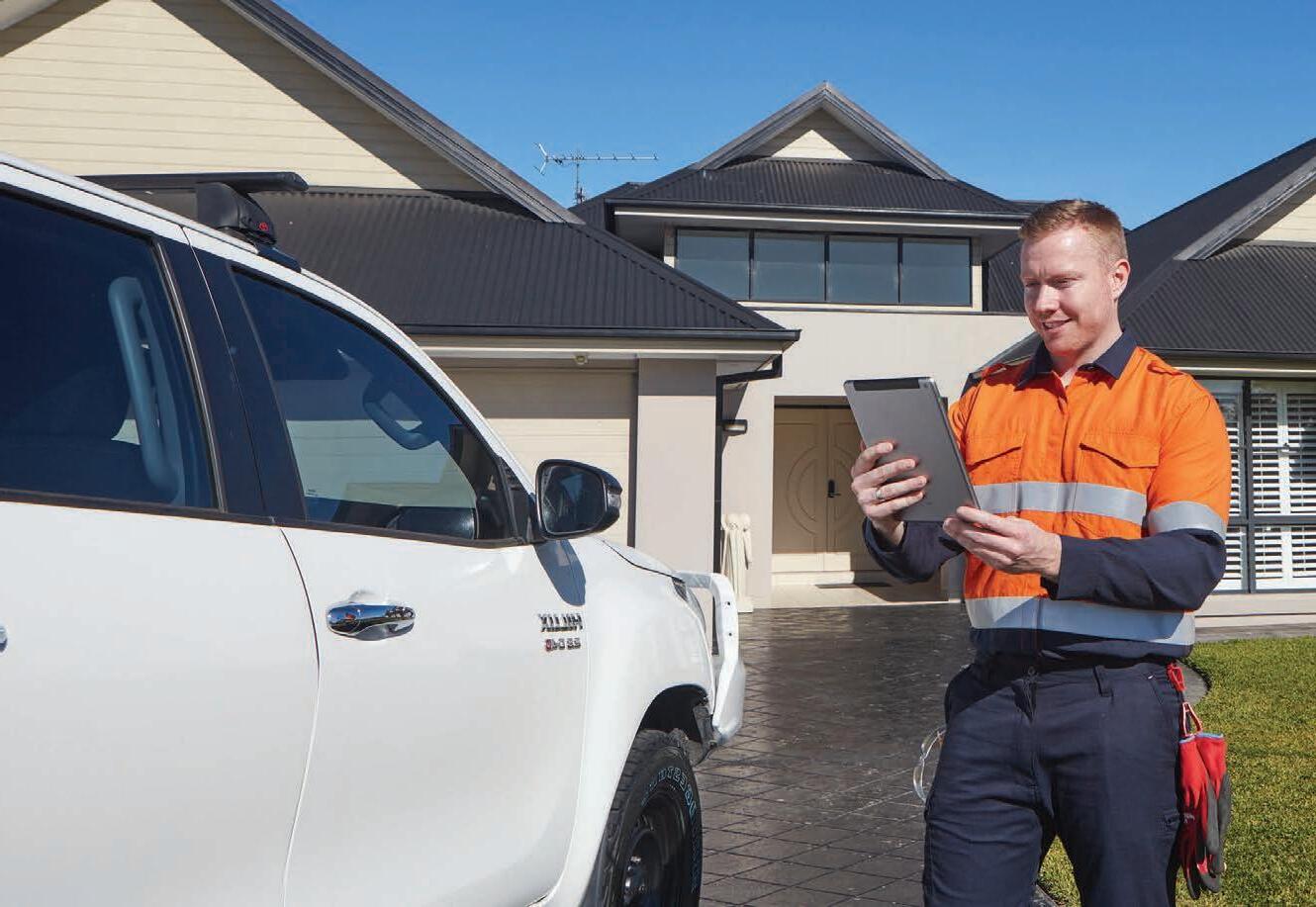
In the water industry, one-size-fits-all solutions don’t hold water. The key to success? A turnkey approach that adapts to each project’s unique demands.
THE DAYS OF off-the-shelf water infrastructure are numbered. In an industry where every site presents unique challenges, companies are realising that a turnkey approach –offering customised, end-to-end solutions – delivers superior results.
For Daniel Black, Director/ Operations Manager at Envirotech Water Solutions, flexibility is the foundation of modern water infrastructure.
“We provide a tailored solution for each project. It’s not a cookie-cutter job – each site has specific needs, from hydraulics to control systems. Being independent means we can source the right pumps and valves for the job rather than being locked into a single supplier,” Black said.
This adaptability ensures that clients receive solutions suited to their needs, a shift proving critical in large-scale infrastructure projects across Australia.
Stronger together: Synergy in water infrastructure
Innovating for efficiency and sustainability provides essential insights into industry collaboration. The evolution of companies such as Envirotech within broader ecosystems, particularly through its relationship with Mitchell Water Australia, illustrates how financial and operational synergies strengthen the sector.
“We’re now self-performing the entire process,” Black said.
“Rather than being a subcontractor, Envirotech is a subsidiary of Mitchell’s, allowing us to deliver full turnkey systems from pipelines to pump stations. It enables us to undertake
smaller jobs that typically wouldn’t be viable for Mitchell’s but are perfect for Envirotech.”
This synergy facilitates efficient and cost-effective project delivery. For instance, while working with Grampians Wimmera Mallee Water (GWMWater), Envirotech repurposed existing infrastructure, saving about 40 per cent of the original budget. Black said such tailored solutions enhance performance and showcase the value of turnkey approaches, positioning the company as the industry standard and driving smarter, more sustainable outcomes.
The power of connections
Strong industry relationships are vital to delivering reliable water solutions. Black said Envirotech’s collaboration with specialist suppliers exemplifies how partnerships can enhance project outcomes.
Events like OzWater, organised by the Australian Water Association, have helped Envirotech form strong partnerships across the industry.
“We’ve been dealing with some of our key suppliers of control and air valves on our projects for decades,” he said. “Reliability and technical expertise are invaluable, and our key suppliers help ensure our systems perform efficiently in the long term.”
Beyond individual projects, events such as OzWater provide an opportunity to connect with suppliers, industry leaders, and emerging technologies. Black sees networking as essential for staying ahead in a rapidly evolving sector.
“OzWater is a great chance to explore new ideas and build partnerships that shape the future
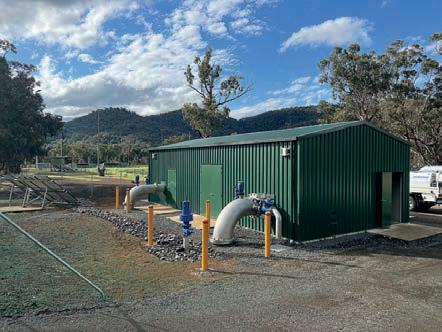
solution, Envirotech can work with its clients to roll out optimal solutions.
Image: Envirotech Water Solutions
“The stronger the connections, the better the outcomes for our clients and communities.”
The impact on communities Turnkey solutions benefit companies and strengthen communities by ensuring long-term water security and infrastructure resilience. Envirotech has focused on delivering robust facilities that support regional growth on projects such as the current East Grampians Rural Pipeline Project.
“Every project we undertake is about more than just engineering; it’s about delivering practical solutions that serve the communities relying on them,” Black said. “Whether it’s upgrading facilities or improving water access, our focus is long-term sustainability and reliability.”
These projects highlight how customised, fully integrated solutions contribute to economic and social resilience. Envirotech’s next phase is about growth – not just in scale but also in expertise and innovation.
Black believes that the company will maintain its industry leadership by continuing to enhance its capabilities in servicing and automating integrated water solutions.
“The water industry is evolving, and so are we. We focus on smarter infrastructure that lasts longer –better data, control, and long-term sustainable outcomes. We’re investing in new technologies and always expanding our skillset to stay ahead of the curve.”
For more information, visit envirotechwater.com.au

• Meter Exchanges. Step 1
Step 4
• Eye-Ball Reading.
• Established Routes.
• Intermediate step to Drive-By.
• Water loss investigations.
• Difficult locations, high cons.
• Digital fleet, jump from S1.
• More frequent data.
• More opportunity to find leaks and cons variations.
• Client Portal for full data access.
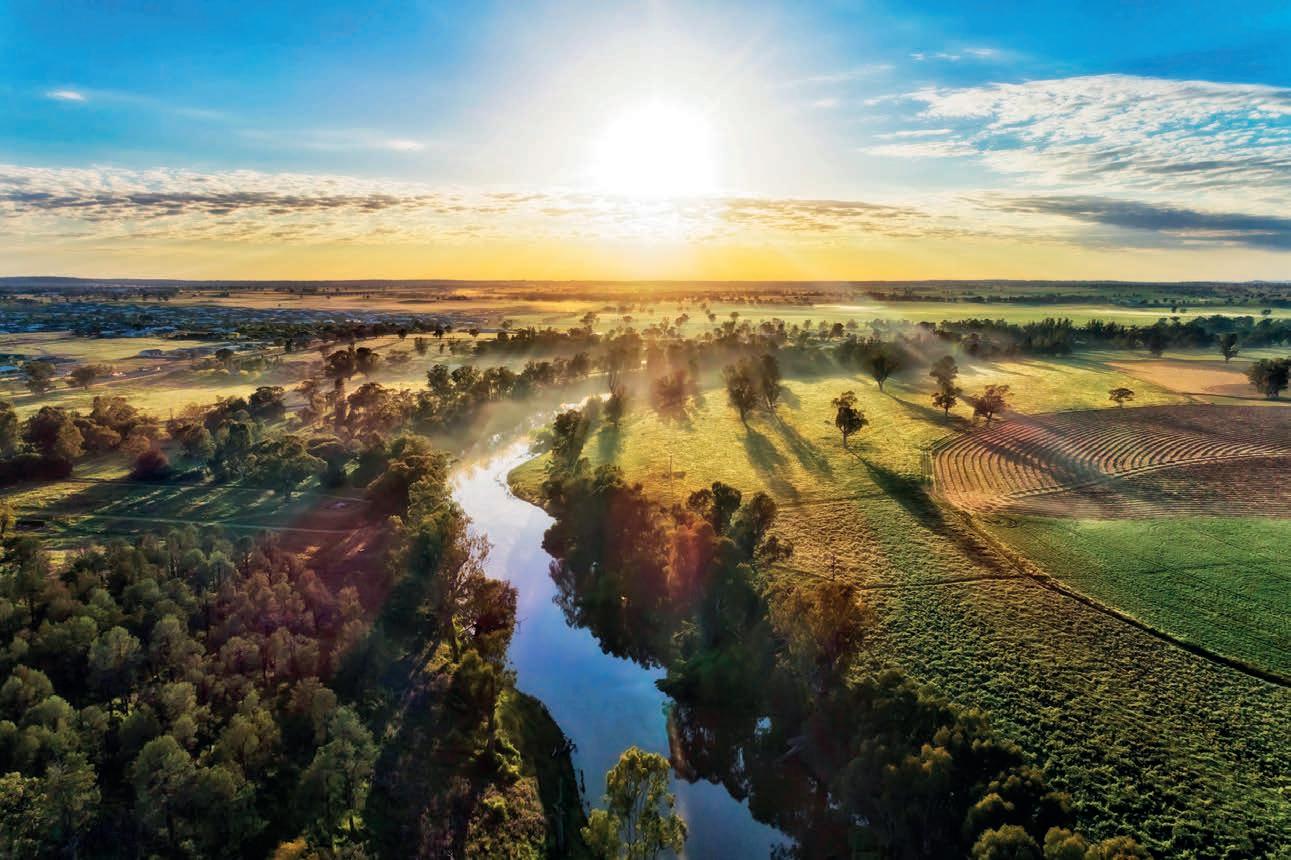
New South Wales is taking practical steps towards smarter water metering and better resource management. NSW DCCEEW Executive Director Operations and Resilience
Ashraf El-Sherbini shares highlights from the journey.
2025 IS AN exciting year for New South Wales water users, who will see landmark metering reforms make huge strides towards achieving nearly full coverage across the state.
Over the next 19 months, we expect to see 95 per cent of all licensed water taken from our inland regional river systems accurately measured and metered, ensuring this incredibly precious resource is extracted fairly, equitably and according to the rules.
That equates to 8500 metered sites across the state, all fitted with state-of-the-art, tamper-evident, near-real-time telemetry.
It’s a big win for both licence holders and the environment, who will be better protected from water theft and over-extraction while helping the water regulator ensure those who do the wrong thing are held accountable.
The New South Wales Government is now rolling out practical changes to make it easier for water users to get the required equipment installed, up and running and compliant.
We’re focusing on larger, higherrisk water users first. Since a relatively small number of larger users make up most of the licensed water take in New South Wales, it makes sense to concentrate our efforts on this cohort. This will give us far better outcomes when considering our waterways and groundwater systems. When we launched metering reform in
2018, we set ambitious targets and timelines, and we know there have been bumps in the road to reaching them.
The vast majority of the community and industry are doing the right thing when taking water. They raised concerns over how quickly this nation-leading reform could be implemented.
We’ve listened.
After a rigorous review launched in 2023, which included close consultation with hundreds of stakeholders, we’ve heard firsthand accounts about the legitimate hurdles preventing water users from becoming compliant.
Issues ranged from a statewide shortage of qualified meter installers to inconsistent or inflexible metering rules, challenges with emerging technologies, and high costs for smaller users.
Last year, we developed a suite of recommendations to ease these barriers and fast-track metering uptake. In November and December, we invited stakeholders to give us feedback on proposed regulatory changes to implement those recommendations.
In March, we amended the Water Management (General) Regulation 2018 to include important reforms, so that the work to streamline the metering roll-out can get well underway.
We have now:
• Offered fully-funded telemetry devices and installation to over
Waterways in New South Wales are precious resources that need to be properly managed for the benefit of everyone.
Images: New South Wales Department of Climate Change, Energy, the Environment and Water (NSW DCCEEW)
2500 sites over the next two years, thanks to $10.5 million in Commonwealth funding
• Introduced new mandatory telemetry and local intelligence device requirements for larger groundwater users
• Expanded the meter installation workforce to include skilled tradespeople, such as plumbers and electricians, and improve their training opportunities and resources
• Simplified metering requirements for smaller water users with entitlements less than 100 megalitres (ML)
• Extended compliance deadlines for large coastal water users until December 2026, and smaller water users with entitlements less than 100 ML to 2027, or until their works approval renewal date
• Extended the first date to revalidate a meter to 10 years after installation, and every five years thereafter
• Established a classification system for work approvals to clarify which works
Ashraf ElSherbini is the Executive Director of Operations and Resilience at the NSW DCCEEW.

• Applied small works metering exemptions across all groundwater sources
• Made floodplain harvesting measurement more practical and water use more flexible, while ensuring all take is appropriately measured.
WaterNSW has also launched its DQP Concierge Program, a service available to meter installers who may need support or guidance while in the field.
By addressing the hurdles and progressing real solutions, New South Wales continues to lead
the way in measuring water and improving the standard, scope, and transparency of its metering network.
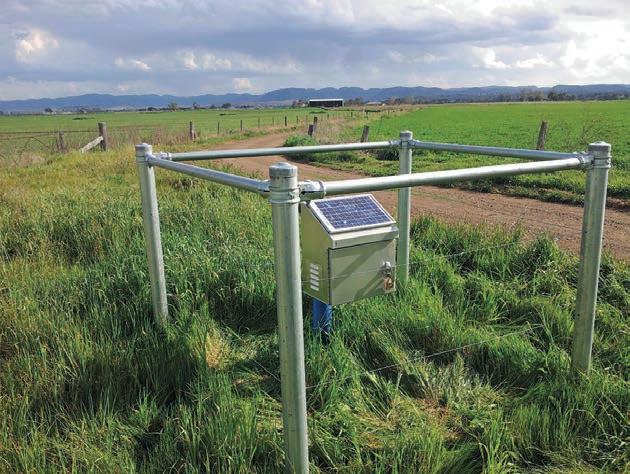
We know most water users do the right thing, and these practical and effective initiatives will ease their path towards compliance. They will help ensure that water resources can be managed responsibly and sustainably for the benefit of everyone, now and in the future.
Measuring the vast majority of water taken has never been more critical as we face less predictable rainfall and climate extremes.
Water metering reforms are being rolled out across New South Wales to ensure that licensed water is measured and metered accurately.
Transparency and accountability are the bedrock of our approach. We’re excited to see these changes take hold as we work towards 95 per cent licensed measurement.
Free telemetry for large water users in the Murray-Darling Basin – get compliant and save money. Regulated water users are now also urged to register. Visit: http:// water.nsw.gov.au/telemetry-upliftprogram
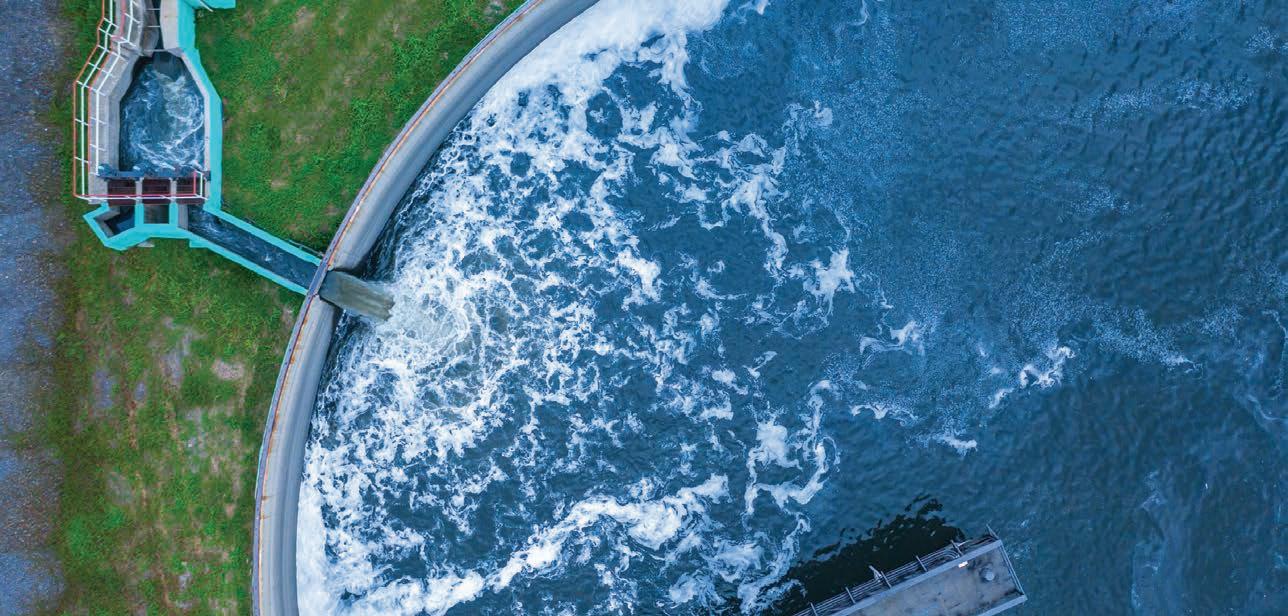
Optimise water and wastewater processes: Bonfiglioli’s wide range of complete gearmotor solutions boost efficiency, cut costs and deliver powerful, energy-saving performance, without compromising on power or torque range.
Bonfiglioli is your trusted partner.

Discover how Fulton Hogan is inspiring future water leaders through a pipeline of knowledge and hands-on discovery.
FULTON HOGAN IS making waves as the Education Sponsor at Ozwater’25 for the fifth consecutive year. Its steadfast commitment to nurturing future water leaders is evident through the Education Hub, a platform designed to immerse hundreds of primary and secondary school students in the diverse realm of water management. More than just a showcase, it serves as a space for exploration, connection, and learning – where students, educators, and industry professionals come together to discover what it means to shape the future of water. The water industry is at a pivotal juncture. Climate change, population growth, and ageing infrastructure are increasing pressure on systems. As technology advances, so does the need for agile thinkers and fresh ideas. Addressing these issues requires a workforce with technical capability, environmental awareness, and a willingness to challenge convention. Inspiring future water leaders establishes the groundwork for resilient and responsive solutions, beginning with education and early engagement.
Aaron Lutton, General Manager for Queensland at Fulton Hogan
Utilities, has been closely involved in the company’s science, technology, engineering and mathematics (STEM) education engagements since 2022. Lutton’s experience in project delivery and people leadership underpins his passionate advocacy for early engagement with students — especially those who may not yet see themselves in the water sector.
Bridging education and industry Fulton Hogan recognises the importance of connecting academic learning with meaningful, hands-on experiences. Through its national STEM Program and the Education Hub at Ozwater, students gain firsthand exposure to the complexities and rewards of careers in the water sector. These initiatives introduce students to potential career paths and highlights the industry’s social and environmental value.
One such success story comes from Marsden State High School in Queensland, which has partnered with Fulton Hogan’s Utilities team as part of an annual STEM engagement program since 2022.
“When we first turned up at Marsden, it was a little bit of ‘Why are they here?’” Lutton said. “Now
Getting young people involved in STEM studies can have positive societal outcomes in the future.
Image: Fulton Hogan
we’re in our fourth year, and kids from previous years come up asking, ‘What’s the problem this year?’ and ‘Can we go to the site again?’” He described a noticeable transformation in student engagement. Attendance improved and students became more curious. “They want to be involved. They nag their mum and dad to drive 45 minutes to take better site photos,” he said. “They come out of their shells, and some who were once shy are now running for school captain or head of house because they’ve built that confidence through the program.”
Fulton Hogan staff talking to students from Marsden State High School during Ozwater 2022.
Image: Fulton Hogan

students choosing classes in Years 11 and 12 that align more closely with our work,” he said. “Some are calling up pipe suppliers and negotiating like little entrepreneurs – they’re curious, thinking, and learning. That shift from passive learning to interactive engagement is what’s driving new behaviours.”
“If we don’t, who will?” Lutton said, emphasising the shared responsibility industry holds in guiding the next generation. “The earlier, the better. They might go another way if they don’t know it’s an option. We want to make sure they at least know the industry is there.”
Addressing the skills gap
The water industry is not alone in dealing with a skills shortage, with an ageing workforce and increasing demand for innovative solutions. As many seasoned professionals approach retirement age, the urgency to replenish and diversify the talent pipeline has grown. Technical knowledge, data literacy, and adaptability are becoming essential traits for the water workforce of tomorrow.
Initiatives such as Fulton Hogan’s national STEM Program are reshaping industry perceptions by actively engaging with students and showing them the range of available roles. Lutton said these interactions help break outdated stereotypes about utility work and highlight the exciting advancements in smart infrastructure, environmental technology, and digital water management.
The program doesn’t stop at sparking interest. It helps students visualise clear, achievable career pathways. Through continued partnerships with vocational education providers, TAFEs, and universities, Fulton Hogan is helping to create direct links between education and employment in the sector.
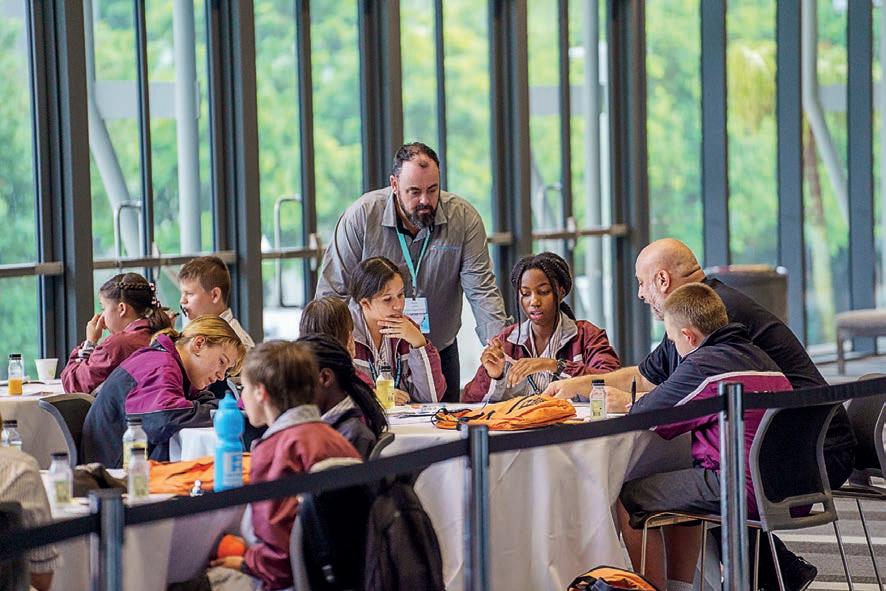
engineers or accountants – everyone has an access path,” Lutton said. “If they want to be out in the field, we’ll let them safely observe our frontline workers and machinery in action in a supervised fashion. That sparks interest and helps them choose trade categories that align with what we do.”
Collaborative efforts for a sustainable future
Fulton Hogan’s collaboration with educational institutions and industry bodies exemplifies the power of collective action. These partnerships go beyond one-off events — they are ongoing relationships built on mutual goals to empower students, build workforce capability, and support community resilience.
Through co-designed problembased learning projects, field visits, and mentoring opportunities, schools deliver learning aligned with STEM outcomes and grounded in industry relevance. Primary and secondary schools benefit from practical insight, helping them refine their programs to meet the growing demand for civil engineering, environmental science, and data analytics skills.
Industry bodies such as the Australian Water Association also play a key role by connecting government initiatives, private-sector innovation, and grassroots engagement. Lutton said the Education Hub is a tangible example of this synergy — a shared space where each stakeholder contributes to shaping the sector’s future.
The Education Hub offers a variety of interactive experiences, from workshops and panel discussions to guided tours of Ozwater. These activities are designed to demystify the water industry, highlight its significance in daily life and link classroom learning with practical outcomes. Students can engage
their unique solutions to reallife challenges faced by Fulton Hogan.
learning environment.
Candice Martin, a grade three teacher at Colonel Light Gardens Primary School in South Australia, highlighted the impact of this collaboration. She has seen students take reallife examples of their learning and become more engaged as a result.
“The students appreciate that so much more because they can see how this applies in the real world,” Martin said. “The students are also picking up persuasive language and working to convince Fulton Hogan staff that their idea is good. There are so many great ways that we, as teachers, can transfer that knowledge to students and see that these young boys and girls are more engaged. This is before we look at their general capabilities, such as creative and critical thinking. Our collaboration with Fulton Hogan has given us many opportunities to see students putting those skills to use.”
As Australia navigates an era of unprecedented change, the need for passionate and skilled water professionals has never been greater. Lutton said Fulton Hogan’s dedication to inspiring future water leaders is a testament to their commitment to a sustainable water future.
“We’re not saying everyone’s going to enter the industry,” he said. “But we’re making sure everyone has the opportunity. We’re trying to bring what we do into the forefront of students’ minds so they can make educated choices about their futures. It’s about giving them access and confidence.”
For more information, visit fultonhogan.com

A new large-scale energy project has revealed how regional water utilities can harness renewables for sustainability and cost control.
IN VICTORIA’S WIMMERA region, a quiet shift is happening. A new solar and battery facility near Nhill is showing how water utilities can make their own energy, cut costs, and rely less on external power. As the sector faces rising electricity prices and ambitious sustainability goals, projects like this mark a shift in how utilities manage energy.
Harnessing the sun’s power
The Nhill Renewable Energy Facility will include more than 9000 solar panels, producing 6.5 megawatts (MW) of solar energy. A 2.75 MW (6.7 megawatt-hour) battery storage system will support this, ensuring a steady power supply.
This is the first time a regional water authority has run a large-scale energy project connected directly to the local electricity grid.
Manager of Strategic Infrastructure Projects at GWMWater, Graeme Dick said the project is a big step in its plan to secure affordable, sustainable energy.
“We are focused on using renewables to meet our electricity needs. The Nhill facility will help us reach our 100 per cent renewables goal and give us better control over costs,” Dick said.
A strategic move towards sustainability
The project is a significant step toward the utility’s goal of using only renewable electricity by 2025 and reaching net-zero emissions by 2035. This follows a broader industry shift towards renewable energy in water management.
“Our long-term goal is not just to offset our energy use but to become
a net generator of renewable electricity,” Dick said. “By investing in large-scale renewables, we secure our energy supply while reducing our exposure to changing electricity markets. This facility will cover most of our electricity demand, and if conditions are right, we could generate extra power to help our customers and the region.”
Economic and community impact Beyond reducing emissions, the Nhill project will have economic benefits. By making its own power, the utility can control rising costs and keep pricing more stable for customers. The project also supports local jobs and investment in renewable infrastructure.
Dick said a key reason for the project’s success is its partnership with Vibe Energy. The company
Graeme Dick
both teams bringing their expertise to deliver a facility that meets the region’s energy needs.
“Our partnerships with project developer Vibe Energy and contractor Next Generation Electrical have been key to managing the complexities of renewable energy,” Dick said. “They brought experience and innovation, ensuring the project stayed on track despite challenges like securing approvals and adding battery storage. Their flexibility and commitment to the region’s energy future has made this a strong collaboration.”
Paving the way for industry peers
He said this project could be a model for other utilities looking to use renewable energy as energy costs remain unstable and sustainability goals become stricter.
“We believe this model has real potential for regional businesses and utilities,” Dick said. “For organisations like ours with many small sites,

With OzWater taking place in South Australia in 2025, Inside Water sought the insight of South Australian Deputy Premier and Minister for Water, Susan Close about the challenges facing the state.
SOUTH AUSTRALIA IS experiencing one of the driest years on record, and drought is biting hard in parts of our state.
The lack of rain has caused people living off the grid to have to buy water for the first time in years, and the State Government has had to open emergency water supplies throughout the Adelaide Hills and on the Fleurieu Peninsula. Demand increased so dramatically that water carters couldn’t keep up, requiring the State Government to open standpipes as an emergency supply. With an extra six trucking companies recently registered to cart potable water, the wait times are starting to reduce.
But unlike during the Millennium Drought of 2001-09 and those before it, the vast majority of South Australians have water security thanks to our desalination plant at Port Stanvac, which has been cranked up to near full capacity in recent months.
The desalination plant, and improved flows down the River Murray, mean South Australians living on the water grid no longer have to live with the dread of running out of water. This is also the case for farmers needing to truck in water until the rains come.
This guaranteed supply also means we can add tens of thousands of much-needed new homes to the network.
The extra environmental water, which has now been committed to under the Basin Plan, is a critical element in restoring the Murray-
Darling Basin’s long-term health. Water for the environment provides many benefits, including sustaining wetlands and floodplains, creating habitat for threatened species, flushing salt from the basin, and helping to keep the Murray Mouth open.
At Lake Hawdon North, on the Limestone Coast, the South Australian and Commonwealth governments are investing $13.7 million to install new regulators that will extend the duration of shallow water levels in the lake. It will create lasting improvements to the local wetlands and support species that use the Coorong South Lagoon, including the sharp-tailed sandpiper, curlew sandpiper, common greenshank, and rednecked stint.
South Australia is also reviewing and updating water allocation plans for the Eyre Peninsula, Lower Limestone Coast, and Mount Lofty Ranges. This important work, led by the state’s Landscape Boards, will ensure the sustainable management of prescribed water resources to balance environmental, social and economic needs.
In the same way access to water can rejuvenate small communities, it can also reinvigorate industries and transform entire regions, even entire states.
The Northern Water project aims to provide a new, climateindependent water source for the Far North, Upper Spencer Gulf and Eastern Eyre Peninsula regions of South Australia.

It would involve building a seawater desalination plant in the Spencer Gulf. The plant would be connected to 600 kilometres of pipeline, which would help unlock vast mineral and energy resources as South Australia heads towards net-zero carbon emissions by 2050. A project of this scale is about so much more than the thousands of jobs and billions of dollars in public and private investment it would generate.
Having a new water supply for this part of South Australia would reduce our reliance on the River Murray and the Great Artesian Basin and ease pressure on groundwater resources.
Fulton Hogan delivers high-quality infrastructure to improve the lives of people in Australia and New Zealand, every day.
We’re a growing, forward-looking, and family-oriented business that’s investing in the talent of tomorrow.
Our commitment to education and innovation ensures our people are equipped to build critical water and wastewater infrastructure for future generations.
Come and join our team.

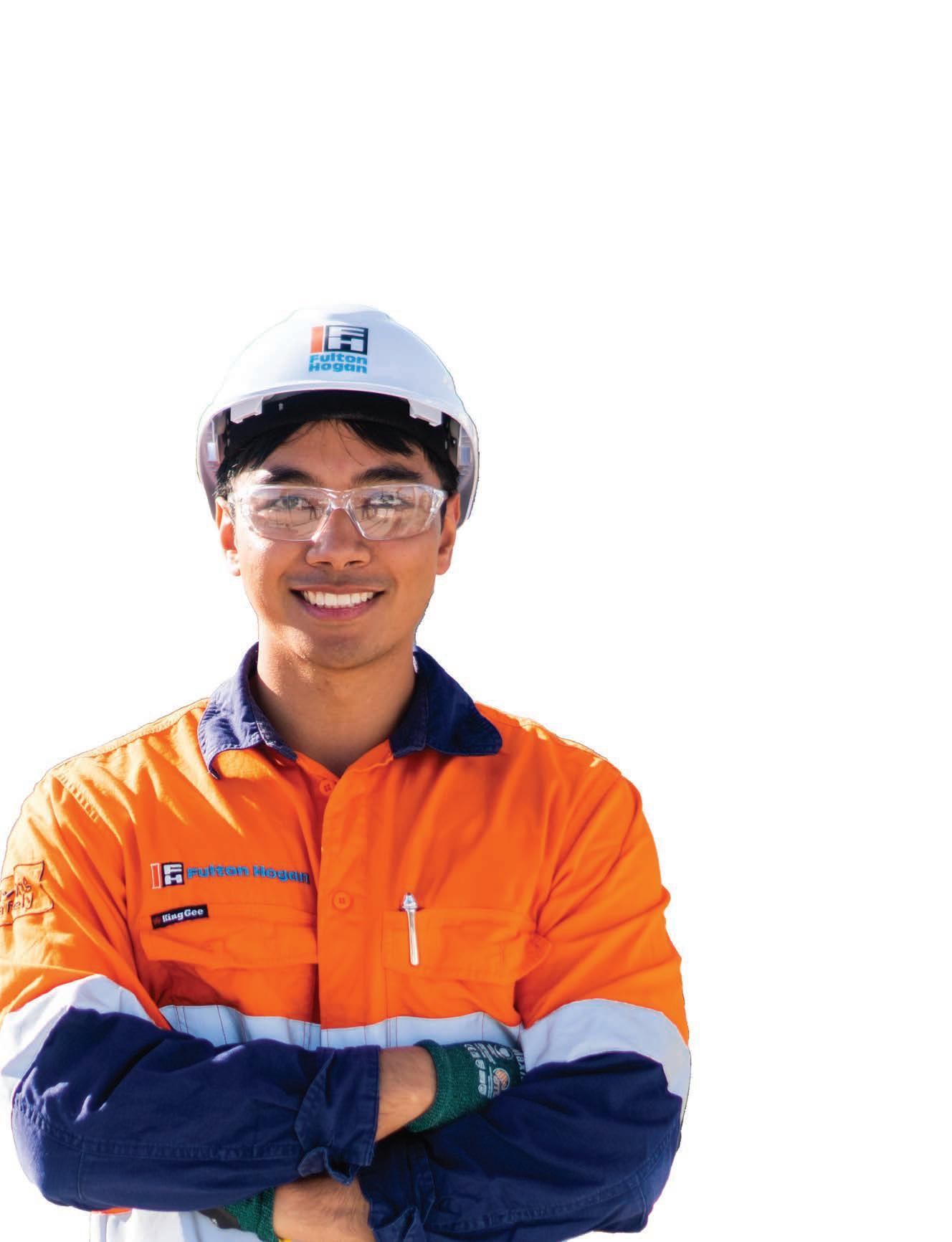

Data Right is Australia’s leading smart water meter installers. Specialising in:
• Installation roll out
• Project management
• Preproject evaluation, decision making and requirement audit
• Network maintenance and replacements
• Water meter reading
• Associated plumbing works Contact us on 1300163837 for a solution to your water meter requirements. headoffice@dataright.com.au www.dataright.com.au

Recognising the efforts of women across a range of industrial sectors, the Women in Industry Awards will celebrate excellence.
THE WOMEN IN Industry Awards are a platform to recognise and celebrate the achievements of women across a diverse range of industrial sectors.
For more than a decade, the awards have shone a spotlight on the invaluable contributions of women who excel in their fields and actively drive change, break down barriers, and inspire the next generation of female leaders.
Organised by Prime Creative Media, the awards encompass industries such as waste management, mining, transport, manufacturing, engineering, logistics, bulk handling, rail, construction, infrastructure, and energy.
They demonstrate that these industries offer viable and rewarding career paths for women. At the same time, the stories and achievements of the award winners serve as powerful inspirations and role models for young women considering careers in industrial sectors.
Looking back at previous years, the awards have highlighted women’s diverse talents and significant impact across various sectors.
Derelle Mitchell from Health Focus Manufacturing was the 2024 Woman of the Year and was also recognised for Excellence in Manufacturing. Other notable winners in 2024 included Kathleen Kelly (McConnell Dowell) for Safety Advocacy, Kate Leone (UGL) for Rising Star, and Allyson Woodford (APA Group) for Excellence in Engineering.
“I’ve been in the industry for a long time,” Kelly said. “Every single day, I get up at four o’clock in the morning and get to work at five. I love my job. I’ve been blessed with the industries and companies I’ve worked for.
“I work at McConnell Dowell and am
proud to work with this company and its fantastic values.”
The categories for the 2025 awards include:
• Business Development Success of the Year: Recognises an individual who has created new growth opportunities for their organisation.
• Excellence in Construction: Honours an individual who has positively contributed to any facet of the construction industry.
• Excellence in Engineering: Acknowledges leadership, technological excellence, and innovation in engineering.
• Excellence in Energy: Highlights positive contributions to the renewables, pipeline, electricity, or oil and gas industries.
• Excellence in Manufacturing: Recognises outstanding personal contributions to a manufacturing business and the wider community.
• Excellence in Mining: Singles out positive contributions to the mining industry.
• Excellence in Transport (Proudly sponsored by Kenter): Celebrates
The Women in Industry Awards presents a fantastic opportunity to highlight
• Industry Advocacy Award: Recognises individuals who have helped shape a positive view of their industry or created beneficial policy changes.
• Mentor of the Year: Acknowledges individuals dedicated to guiding and sharing knowledge within their industry.
• Rising Star of the Year (Proudly sponsored by Atlas Copco): Recognises individuals showing significant promise early in their careers.
• The Safety Advocacy Award (proudly sponsored by Paccar Australia) Honours those actively working to improve safety within their industry.
• Woman of the Year (Proudly sponsored by Fulton Hogan): This prestigious award is chosen from the winners of the other categories, recognising an exceptional woman whose contributions are changing the industry for the better.
Each year, the Women in Industry Awards culminate in a gala dinner, bringing together industry leaders, nominees, and supporters to celebrate the achievements of the finalists and winners.
The 2025 awards night will be held in Melbourne on 19 June 2025. Help celebrate with us.

A conversation with two women within Interflow reveals a powerful sense of purpose and confidence in the fact that you don’t have to be an engineer to shape the future of water.
JOANNA RODD, INTERFLOW’S Community Relations Manager, experienced a moment that clarified the purpose of her role when she knocked on the door of an older woman.
“This lady was 94,” Rodd said. “She had lived in her home for 60 years and still drove. She was lonely and was nervous around project teams on and around her property. Once she sat and had a cup of tea with me, she quickly understood that our work was vital for her community’s good. She realised our crew members were good people who would take care of her and get the job done as quickly as possible. When you have a genuine interaction with someone, instead of just dropping a letter into their mailbox, you realise this is what
“Interflow has been phenomenal for me,” she said. “The support I have received here – from leaders, teammates and even executives –has been amazing.”
Across the organisation, women are making their mark, said Interflow Chief Financial Officer Tracy Black. “Women are shaping the culture, influencing our ways of working and delivering outcomes,” Black said. From the field to finance, community engagement to marketing, safety and quality control, women at Interflow are redefining what a career in water can look like and who it’s for.
If you can’t see it, you can’t be it Black said women are well represented at every level of

Tracy Black is the Chief Financial Officer and member of the executive team at Interflow.
organisational success. Black said it’s also essential for women in the business to see visible examples of where they could progress.
“When I look at companies, I always look at their executive team,” Black said, who joined the Interflow leadership team in 2022.
“It’s a major red flag when I see organisations without any women on their executive team, especially when there are positions – like HR, for example – with a robust female talent pipeline in the market.”
Why? Companies that focus on inclusion and diversity are more likely to have a welcoming culture that enables people to be authentic at work. People who have permission to be authentic are happier at work and, therefore, more productive. They enjoy their work, Black said, and so they do it well.
Women’s success is not a coincidence
Black said Interflow has made a conscious and well-designed effort to shift the balance. That includes diversity and inclusion strategies, regular leadership training programs open to all team members, and a gender pay gap measured at minus five per cent.
“The executive group here has a young, modern way of thinking,” she said. “I think that matters. In my experience, the old guard has a particular way of working, and the new guard has a different mindset. We all hire in our own image, and if an executive team is all male, it is hard for them to visualise a woman being in that group. But that’s not an issue at Interflow.”
Much more than engineering
While Interflow continues to attract top engineers, Black pointed out that almost every role imaginable in the water space exists.
“There are marketing roles, as well as people and finance roles,” she said. “There is IT and legal and logistics and working on the tools, you name it. Stay open to industries you might not have considered, and you could find yourself in an engaging and important sector, like water, where you can make a real difference in communities and the environment.”
Rodd agrees, saying each day in the water space is unique and deeply satisfying.
“As the conduit between the community and our crews, I’ve learned the technical side over
time,” Rodd said. “But what matters most is listening, adapting and communicating. You need to be a bit of a chameleon, talking to someone in a luxury suburb one day and someone in a high-needs area the next.”
Black said part of the attraction of the water sector is the fact that the results of the work are extremely tangible.
“I’ve worked for businesses where you can’t touch the product,” she said. “But with water, it’s tangible. You know that it’s essential. You know it matters, and people here feel that. There’s a sense of pride

choose a sector where you see people like you succeeding. Then lean into your strengths, always be collaborative and curious, and most importantly, always be yourself.”
For more information, visit interflow.com.au


Turning up the pressure, keeping down the downtime – industrial reliability from the ground up.
and power generation are vital elements in successfully operating essential utility services, manufacturing facilities, industrial complexes and commercial environments.
Choosing the right solution is about delivering the required performance outcomes and ensuring every customer has the service and support available to keep things running at their optimum.
As a leading provider of compressed air and power generation solutions across Australia, CAPS offers an extensive range of products and brands to provide complete air and power solutions suitable for local operating requirements. Worldrenowned partner brands such as Ingersoll Rand, AIRMAN, Mitsubishi Heavy Industries, Sauer, Pedro Gil, Bollfilter, Next Turbo Technologies, and Oxywise feature in the CAPSdesigned solutions.
Founded in Western Australia in 1980, CAPS joined the Ingersoll Rand family in 2024, expanding its access to its global offerings that enhance industrial productivity and efficiency.
Air solutions to suit
Whether looking for a reciprocating, rotary screw, oil-free rotary screw, portable diesel or centrifugal air compressor, CAPS’ flexible solutions are engineered around individual needs with a commitment to delivering low-cost, best-in-class industrial air compressors that are engineered to last.
Utilised in water and wastewater treatment, air blowers are vital in aeration processes, air scouring and filter backwashing activities. CAPS’ experience and range of positive
displacement blowers, as well as multi-stage centrifugal and singlestage centrifugal turbo blowers, are suitable for a variety of industrial wastewater treatment applications. CAPS Australia has efficient solutions for at-scale nitrogen generation to support operational needs. Experienced in delivering engineered nitrogen or oxygen generation systems, CAPS can configure the equipment needed to support onsite demands.
As part of its commitment to providing specialised water solutions, CAPS has partnered with industry-leading filter manufacturer Bollfilter to deliver its range of automatic, manual, duplex and simplex filters, along with fine filter units and membranes. CAPS can support water filtration applications, chemicals, and petroleum products.
Industrial, utility and commercial operations are reliant on uninterrupted power supplies. CAPS has proven to deliver reliable, cost-effective backup power solutions customised to meet operating environments. The Airman range of industrial diesel-powered generators is the
The industrial blower solution keeps operations running.
smart choice for a reliable energy source. Designed, engineered and manufactured in Japan, Airman is one of the world’s largest diesel compressor and generator manufacturers.
Partnering with Mitsubishi Heavy Industries Engine System Asia (MHIES-A), the Mitsubishi Generator Series (MGS) delivers reliable and excellent performance. It supplies power during emergencies and as a backup for critical operations. The units are crafted in Japan with globally recognised Mitsubishi engines, Mitsubishi turbochargers, and advanced control systems.
Systems designed to suit the application
CAPS delivers complete solution designs developed by its inhouse engineering team and supported through its Australian ISO9001-accredited manufacturing facility. The custom-built systems are perfectly matched to clients’ requirements.
Utilising quality products with proven reliability, CAPS delivers global solutions suited to Australian conditions backed by local service. With 10 branches nationwide, CAPS’ dedicated team delivers exceptional service, expert advice, support and spare parts.
For more information,
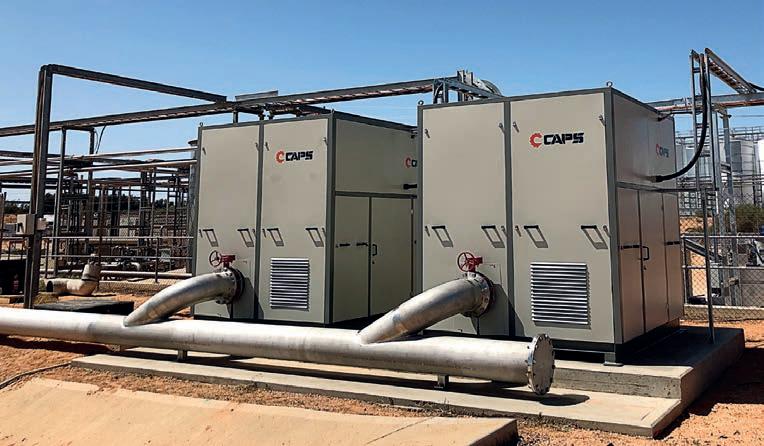


Heavy-duty never looked so light on effort– this mid-size truck is ready for whatever the water industry throws at it.

IF YOUR UTE can’t handle the pressure, it will crack long before the next flood arrives. That’s the harsh reality confronting many in Australia’s water and wastewater sectors, where rugged terrain, remote job sites, and increasingly complex infrastructure require more than a badge and tray. Enter a vehicle tested under conditions tougher than a MurrayDarling drought.
Workhorse or workforce?
Australian utilities, contractors and council crews know their vehicles do more than carry gear.
According to Dave Burn, Chief Program Engineer at Ford Australia, the Ranger Super Duty was developed to shoulder that burden.
“We know Ranger Super Duty will be pushed to the limits on some of the toughest terrain on the planet,” Burn said. “That’s why we ensured the underneath had highstrength protection.”
A reinforced frame, upgraded differentials, and heavy-duty axles support a Gross Vehicle Mass of 4500 kilograms. Eight-stud wheel hubs and a thicker chassis back it up,
giving water industry professionals confidence in carrying capacity and long-term durability.
What about those towing trailers full of pumps or pipes? With a maximum braked towing capacity of 4500 kilograms and a Gross Combined Mass of 8000 kilograms, the Ranger Super Duty sets new expectations for the mid-size segment.
In utilities, efficiency is often a matter of minutes. The Ranger Super Duty’s electronics aim to reclaim time from trial and error.
“Using a yaw rate sensor to guide Pro-Trailer Backup Assist makes for faster system setup and running,” Burn said. “Able to store up to 10 trailers and only require calibration once per trailer makes manoeuvring heavy trailers much easier.”
Payload is estimated in real-time via Onboard Scales, while Smart Hitch ensures trailers are loaded correctly. For regional operators driving between depots and field sites, that means less guesswork and smarter movement.
Autonomous driving robots were
The new Ford Ranger Super Duty can handle almost any terrain to ensure that remote pump stations get the service they need in a timely manner.
Image: Ford
even used in 24/7 tests at Ford’s You Yangs facility, simulating the kind of punishment only a storm-damaged treatment plant can deliver.
Built-in versatility
The water industry values adaptability. Sites shift. Loads change. Conditions evolve. Vehicles must do the same.
“The reinforced frame and readily accessible mounting points make it easy to integrate a variety of aftermarket accessories,” Burn said.
“These larger, stronger components improve vehicle durability and reliability, which we know our customers will appreciate.”
Available as a single, super, or double cab chassis, the Ranger Super Duty suits councils, maintenance crews, and contractors alike. It’s built not just for roads but for roles.
Ready when the water’s not Flooded tracks and remote bore fields are familiar challenges. That’s why the Ranger Super Duty includes a sealed snorkel, locking differentials, and a two-speed transfer case borrowed from the F-Series.
“Extensive testing in controlled and real-world situations proved Ranger Super Duty has the capability needed for all manner of users,” Burn said.
“From emergency services to farmers and recreational off-roaders, it’s been built to perform.”
Burn said the real test won’t come on a test track. It’ll come in the mudsoaked access road to a failed pump station or on the steep climb to a hillside reservoir. The real question isn’t whether this vehicle can make it – it’s whether the industry is ready for a factory truck that doesn’t ask for compromises.
For more information, visit ford.com.au
To finish each issue, we aim to look at the lighter side of water and waterrelated issues. If you’ve seen an amusing story, let us know so we can consider it for the next issue.

Tea time: The ultimate water filter Researchers have discovered that your humble cuppa might be moonlighting as a water purifier in a revelation that could make even the Mad Hatter pause mid-tea party. That’s right – while you’re sipping on your Earl Grey, those tea leaves are hard at work, adsorbing heavy metals like lead and cadmium from your drinking water. Who knew teatime could be so... cleansing?
According to a study from Northwestern University, brewing tea naturally removes significant amounts of these toxic heavy metals.
“The heavy metal ions stick to the surface of the tea leaves, effectively filtering dangerous contaminants out of your drink,” Vinayak Dravid, Abraham Harris Professor of Materials Science and Engineering at Northwestern University, said.
“We’re not suggesting that everyone starts using tea leaves as a water filter. Our goal was to measure tea’s ability to adsorb heavy metals. By quantifying this effect, our work highlights the unrecognised potential for tea consumption to passively contribute to reduced heavy metal exposure in populations worldwide.”
But before you start bulk-buying tea bags to purify your tap water, it’s worth noting that not all teas – or tea bags – are created equal. The researchers tested various types, including black, green, oolong, white teas, chamomile, and rooibos. They also examined the differences between loose-leaf and commercially bagged tea.
“The cotton and nylon bags remove practically no heavy metals from water,” Benjamin Shindel, the study’s first author, said. “Nylon tea bags are already problematic because they release microplastics, but most tea bags used today are made from natural materials, such as cellulose. These may release microparticles of cellulose, but that’s just fibre our body can handle.”
If you’re keen to maximise your tea’s purifying potential, you might want to opt for those cellulosebased tea bags or, better yet, go loose-leaf. And remember, patience is a virtue. The longer you let your tea steep, the more heavy metals it can adsorb.
“Steeping for longer periods or even overnight – like iced tea –will recover most of the metal or maybe even close to all the metal in the water,” Dravid said. “The
interaction between the tea leaves and the metal ions increases over time, making extended steeping a surprisingly effective method for contaminant removal.”
The findings open the door to more questions for those wondering whether their morning cuppa is secretly a science experiment. Could tea be integrated into water filtration systems? Would largescale tea-infused filters be effective?
Researchers suggest that while tea is no match for industrial water treatment plants, its ability to capture heavy metals in small amounts makes it an interesting candidate for further study.
“While tea can remove some heavy metals from water, it’s not a substitute for proper water treatment processes,” Shindel said. “But it’s a delightful bonus to know that your favourite brew is not just comforting but also working behind the scenes to make your water a tad cleaner.”
For now, the best approach remains a balanced one. Don’t rely on your daily cuppa to replace your water filtration system but take a moment to appreciate the hardworking tea leaves in your mug. They’re not just steeping; they’re purifying. Cheers to that!



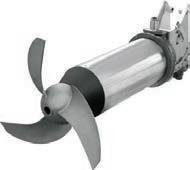
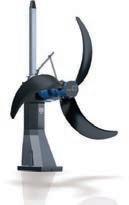
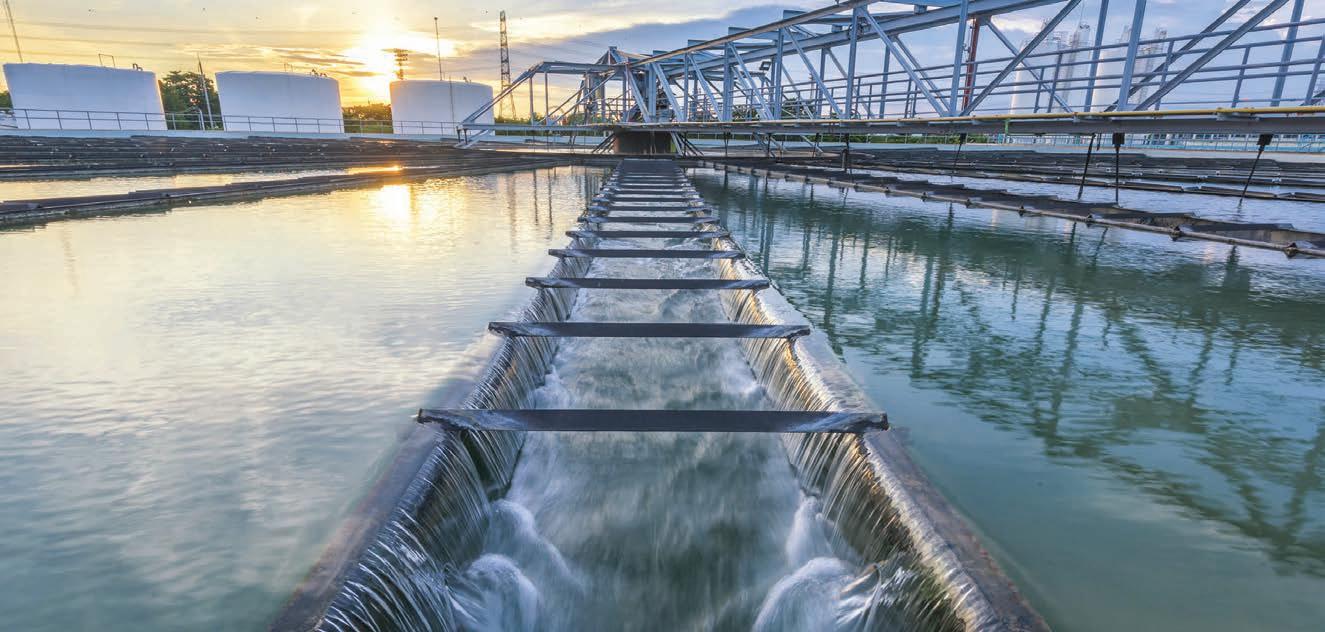



Vehicle weights are approximate and subject to variance. Vehicles should be weighed when adding additional load, accessories, or towing a trailer to ensure GVM, GCM and Gross Axle Weight Ratings are not exceeded.